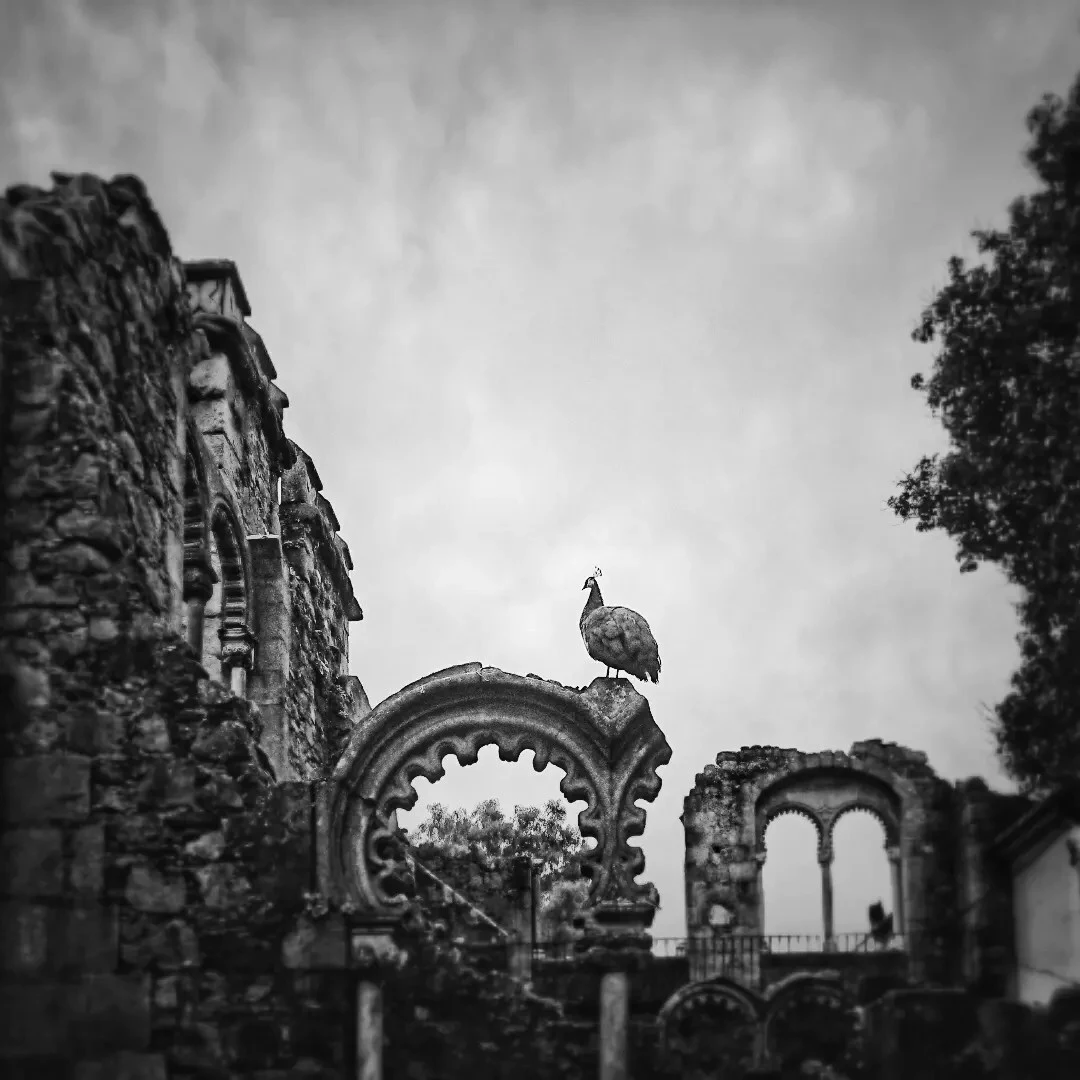#peacock

Two fish swimming in opposite directions and frequently connected by a string are the symbol for Pisces. Pisces individuals, being a water sign, are known for their flexibility, creativity, and empathy. They possess a natural sense of intuition and compassion, often prioritizing the needs of others. However, people born under this sign may struggle with setting and maintaining personal boundaries.
3 #Nakshatras and 9 #Padas have an impact on each Rashi, which spans 30 degrees, and together they help to shape personality traits. If your moon sign degree falls between 16:40′ to 30, then you belong to the #Revati #Nakshatra. This Nakshatra symbolizes the ability to transcend and is associated with hopefulness. It allows individuals born under Pisces to look beyond the ordinary aspects of everyday life.
Revati, a name that means “One who nourishes, bringing growth and prosperity,” embodies the essence of being a guiding light. It signifies someone who shines brightly and illuminates the path for others to follow. Revati is dedicated to rescuing individuals who are in need of special protection, including children and animals.
Nakshatra Deity #Pushyan:– the lord of the Anils. He is a form of #Shiva, specifically one of the 12 Adityas.
Pushyan is responsible for guiding souls to #heaven.
It is linked to old-age homes.
Revati reached out to veterinary doctors. Swati also indicated the same. Lord Shiva is closely associated with animals.
What Revati Nakshatra is like in general
As one of the most pleasant nakshatras, it has a good effect on people who are born into it, giving them a sense of elegance and grace. Even though they are helpful and have some social graces, they may be able to stay unaffected by the stresses of situations. Their appearance is graceful and well-lit, with lines of knowledge and educational success. Changes and turns rarely have an impact on them.
Their faces and bodies are proportionally beautiful, and their poise, friendliness, knowledge, and ability to figure things out are the most important parts of their personalities. It also includes having a great mind and a desire to learn.
Behavior traits
Revati-born people are kind and outgoing. By showing compassion, you get respect, love, and wonder. Reaching out and helping others drives their actions. They are generally considered mystical because of this.
It’s odd that they don’t care about helpful stuff despite their superb social abilities. They dwell in dreams and thinking to avoid reality.
Positive qualities
Besides being pillars of strength and support for society, such locals are religious, ethical, and principled. Their culture, refinement, and etiquette are also valued. Their optimism, which is naturally beneficial, is another great feature.
Negative aspects
Negative aspects
Because of the negative effects of some planets, natives may be prone to laziness and sadness. Aside from these things, their rigid adherence to principles and accepted rules of behavior may lead to bad traits like stubbornness, temper, and a strong will. This may lead to orthodoxy and belief, which are both bad things.
People born in the Revati Nakshatra have a choice of jobs
People with a prominent Revathi in their horoscope are good candidates for jobs in scientific study, archeological survey, writing, and literature. They can also do well in jobs linked to management, astrology, and astronomy by using their knowledge and social skills.
Compatibility and Incompatibility of Revati Nakshatra
Magha and Revati are incompatible based on nakshatra obstruction principles. The concept of “yoni kuta” states that Bharati and Revathi, represented by male and female elephants, are the most compatible. Elephants’ enmity against lions makes them incompatible with Purva Bhadrapada and Dhanistha, while their friendly nature towards monkeys, sheep, and snakes makes them compatible with the corresponding nakshatra. As a result, Revathi nakshatra is compatible with the Shravana, Uttaraashada, Krittika, Rohini, and Pushya nakshatras.
Favorable: Initiations, Marriage, Sexuality, Transaction and Dealership of Goods, Music, Art, Occult, Spirituality, Healing, Leisure Actions and Gardening, Conclusions, Business or Financial Matters, Exchanging Goods, Music, Drama, and Creative Activities, Charity, Studying Spiritual or Occult Teachings, Healing and Treating Ailments, Activities for Leisure and Relaxation, ending or Completing Activity
Unfavorable: Activities requiring Severe Tactics or Bold Action, Overcoming obstacles; enmity; calamities; Sharp actions; surgery; Physically Strenuous activities; the Last Two Padas of Revati are not Supportive of Beginning a New Activity.
Meaning: “One who Nourishes bringing Growth and Prosperity”, Revati means the “Shining One”
“When the prominent Revati Nakshatra aligns with the link between Mercury and the Moon in a horoscope, the person is swept away by their own contemplative thoughts.”
#Star: Revati
Rasi (Zodiac): Pisces
Range: 16° 40’ to 30° 00’ Pisces
Padas: Sagittarius, Capricorn, Aquarius, Pisces
Ruling Planet: #Mercury
Indication: “The Wealthy Star”
Body Part: The Abdomen and Groin, the Ankles and the Feet
Guna (Quality): #Sattwa
Gana (Race): #Deva (Divine, God-like )
Purushartha (Goal): Moksha (Spiritual liberation )
Tridosha: #Kapha (Phlegm or Water + Earth)
Nature/ Category of Star: Mridu (Soft)
Varna (Caste): Shudra (Worker)
Gotra (Clan): Kratu (the name translates as the “One who Inspires”)
Direction : #East
Pancha Mahabhuta (Element): Aakash ( #Ether)
Shakti (Power) : The Power to “Nourish, Protect, and Foster”, the Power of Nourishment is Symbolized by ‘Kshira’ which is Milk
Desire : To become Lord of the Animals
Result of #Shakti, Basis, & Desire: Nourishment of the entire World
Activity : Balanced
TriMurthi (Process) : Shiva (Dissolve)
Direction of Mouth / Motion : Tiryanga Mukha (Looking Straight/ Facing Forward/Level)
Yoni (Gender) : #Female
Animal Symbol : #Elephant
Bird : #Kestrel, #Peacock (Mayura), #Pigeon
Sounds : De, Do, Chaa, Chee
Tree/ Plant : Maadhaka,
Colour : Brown
Individuals born under the Revati Nakshatra are blessed with a natural inclination towards romanticism and a strong desire for a fulfilling love life. They are drawn toward dreamy and imaginative notions of love and seek to find both stability and novelty in their relationships.
If Revati Nakshatra has a P.A.C. connection with the 5th house or lord, they may desire their partner to openly express love, as it brings them a sense of reassurance and deepens their connection. It’s truly heartwarming how they value these expressions of love, as it shows just how much they care and cherish their relationship. However, every now and then, this beautiful longing for love and affection can stem from a whimsical and enchanting notion of love, much like Cinderella’s fairy tale, or a deep soulful connection from a past life. (While astrology deliberately suggests that long-lasting love can have its fair share of ups and downs, it’s important to remember that not all love stories unfold exactly as we imagine in our dreams.) It’s absolutely wonderful to dream of a fairytale romance, but it’s equally important to embrace the beautiful complexities and joys that come with real-life relationships.
The Revati Nakshatra holds great significance in Vedic astrology. The positioning of planets in this area can greatly impact their characteristics. Hence, it is important to understand and analyze the influence of the Revati Nakshatra on a deeper level for a comprehensive astrological reading.
https://astrokavi.com/2023/10/28/pisces%f0%9f%a7%9c%e2%99%80%ef%b8%8f-revati-nakshatra-power-to-rise-above-a-quality-linked-with-optimism/

#Shravan #Nakshatra is associated with listening and learning. Those born under the Shravan Nakshatra have a remarkable aptitude to absorb all knowledge by listening, much as our forefathers did through oral traditions. The media and communication industries are essentially a part of this constellation because the core notion is listening and learning.
Shravan Nakshatra, also known as Shravan, is the 22nd constellation on the list of 27. Lord #Vishnu is its ruler, and it extends into the Makara Rashi or Capricorn sign. The three stars that make up Shravan Nakshatra are Altair, Alashain, and Tarazed, which together form the shape of an eagle’s head. The name “Shravan” means “ #hearing,” and its symbol represents the ear, which is the organ of hearing. Those born under the Shravan Nakshatra sign tend to have a strong attention span, a clear vision of their goals, and a desire to complete all assignments from the outset. They may also travel to other countries to pursue higher education.
#Shravana #Birth #Star Basic Information
Shravana nakshatra is ruled by the Moon, and it signifies the culmination of lunar activity. The nakshatra’s symbol is three footprints, and it appears as the shape of an eagle in the night sky. The name Shravana means ‘listening,’ and this nakshatra represents the art of hearing or education that is spread through aural methods. The symbol of three footsteps represents limping and is linked to Vishnu, the creator. This nakshatra is also the birth start of Devi Saraswati, the goddess of education and knowledge. As a result, people born under this nakshatra are blessed with a wealth of scholarly expertise, wisdom, and insight.
Shravana Nakshatra 1st Pada: The first pada of the Shravana Nakshatra falls in the Aries Navamsa ruled by Mars. Planetary influences in this area encourage the development of rational thought, aspiration, and initiative, as well as prompt action toward profession.
Shravana Nakshatra 2nd Pada: The second pada of the Shravana Nakshatra falls in the Taurus Navamsa ruled by Venus. The people who were born in this pada are diplomatic, have an appreciation for the arts, and are more stable.
Shravana Nakshatra 3rd Pada: The third pada of the Shravana Nakshatra falls in the Gemini Navamsa ruled by Mercury. The good of Shravana is emphasized here, including its emphasis on communication and the desire to increase one’s knowledge through means such as wise conversation.
Shravana Nakshatra 4th Pada: The fourth pada of the Shravana Nakshatra falls in the Cancer Navamsa ruled by the Moon.Being empathetic and open-minded is the key to success in this situation. There is a good chance that these natives are employed in the hospitality sector or in public service positions.
Shravana Nakshatra Characteristics
One of the most appealing behavioural characteristics of such people is their amicability. They are constantly at ease with their surroundings and people. They make calculations and plan to achieve higher goals in their lives, but they will never compromise their honesty and kindness to others. Another immediately observable behavioural attribute of these folks is their intelligence and boldness in their day-to-day dealings. They are perfectionists who are particularly concerned with producing work that is free of defects.
Negative Traits
The other side of their personality shows their flaws. People born under the Shravana nakshatra are often smart, which, when combined with their wealth of knowledge and skills, can lead to selfishness and stubbornness, which are both bad traits. Since this nakshatra is determined to get what it wants, a wrong step or a poorly planned effort could cause these people to hurt others to get what they want.
People born in the Shravana Nakshatra have a choice of careers.
When it comes to making a living, these people are interested in a wide range of jobs, from helping others to running their own businesses. Due to Saraswati ruling over them, they will succeed in their professional endeavors. The natives will be interested in many different kinds of jobs, such as different kinds of engineering, medical education, science, and arts. They will be financially stable unless they go down the wrong path.
Shravana
Rasi (Zodiac) Capricorn
Range 10o 00’ – 23o 20’ Capricorn
Ruling Planet #Moon
Meaning
“To Hear and Listen” or “Listening Equipment”
Body Part
The #Ear, the Sex Organs
Guna (Quality) #Rajas
Gana (Race) #Deva (Divine, God-Like Dispositions)
Purushartha (Goal) Artha (Wealth or Material Pursuits)
Tridosha #Kapha (Phlegm or Water + Earth)
Nature/ Category of Star - #Chara (Movable, Changeable)
Direction - #North
Pancha Mahabhuta (Element) - #Air ( #Vayu)
Shakti (Power)-Samhanana #Shakti (The Power to “Connect with Others”)
TriMurthi (Process)- #Brahma (Create)
Direction of Mouth / Motion-Urdhwa Mukha (Looking Up/ Facing Upwards)
Yoni (Gender)- #Female
Animal Symbol- #Monkey
Bird-Francolin, Cock (Kukkuta), Sarus Crane (Saarasa), #Peacock
Sounds-Ju, Jay, Jo, Gha
Tree/ Plant-Arka, Rui, #MilkWeed #SwallowWort, #CrownFlower (Latin Name: Calotropis Gigantea)
Colour-Light Blue
Mythology: The Demon King Bali had taken over all three worlds (Earth, Heaven & Netherworld). The Demi-Gods asked for help from Vishnu. Vishnu told them that he would help. Vishnu took the form of a small Brahmin boy in his Vamana Avatar and went to see Bali after he had finished a Yagya.
Key theme
good for gaining knowledge through listening and traveling
The person born in Shravan Nakshatra wants to know what other people think of him or her.
Shravan Nakshatra people love learning and adventure. Their interest about stories and experiences helps them grow as they go through life. Meet diverse people and experience different settings to develop a new perspective on life. Under the stars, they appear as truth-seekers. They appreciate the wisdom they get by listening and traveling and embrace the experience with clarity.
https://astrokavi.com/2022/11/11/shravan-nakshatragaining-knowledge-through-listening-and-traveling/
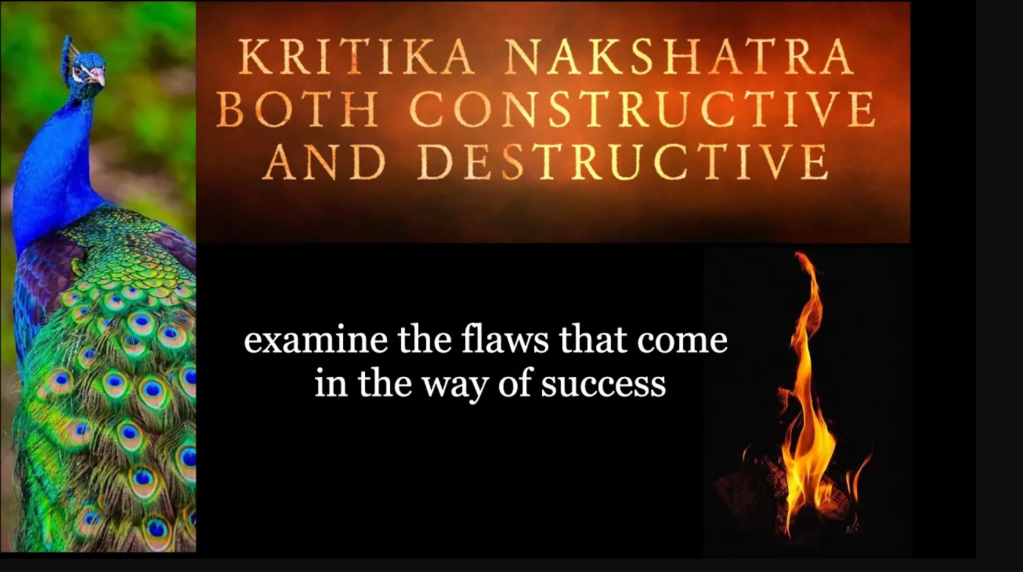
People born under the #Kritika #Nakshatra have fiery personalities. The #Sun is the ruling planet, which accounts for its fiery nature. However, it also represents the highest level of #purification.
The #constellation in which we are born has an effect on our psyche, and the quality of the constellation has a subtle effect somewhere in our nature and work.
Krittika resides in Taurus and Aries, according to #Vedicastrology Because ‘Agni’ is the ruling deity, it is regarded as a source of power and energy. The name Kritika translates to ‘cutter,’ and the symbol resembles a sharp object.’ As a result, it can be said to be both constructive and destructive.
Krittika Nakshatra natives are always on the lookout for new #information and adventures. They require physical activities to keep their minds active and alert.
Krittika Nakshatra’s friendly activities include #Agni Puja Shuddhi, Leader, Executive, Cooking, Embroidery, Sewing, Cutting, Honesty, Drum Playing, Debating, and Extra-curricular Activities.
The nurturing and motherly qualities of Kritika Nakshatra are hidden behind their tough exterior.
Professional Interests – Teacher, Modeling, Fashion Designer, Military Career, Inventors, Discover, Excavators, Heads of State Organizations, Fire and Police Departments, Barbers, Butchers and Tailors, Arms Markets, Carpenters, Building Contractors, Metaphysics, and Astronomers.
Krittika Nakshatra Characteristics
The keen ability to identify and trace is what sets Krittika Nakshatra apart. Any flaw that stands in the way of success is scrutinized in people born under the Krutika Nakshatra.
Krittika Nakshatra’s cosmic location is also responsible for its innate ability to transcend the realm of material energy.
Personality traits of those born under the Kritika birth star include an emphasis on perfection and a subtle sense of understanding. People born under this Nakshatra are generally intolerant of flaws and shortcomings, and they have a blunt straight personality.
This fiery element is reflected in their fiery nature when agitated. Their rage or anger is usually slowly fading away. Because of the Nakshatra’s cosmic location, natives ruled by Kritika Nakshatra are prone to spiritual transformation, with the need for purification and the breaking of material bonds.
Natives born under the patronizing influence of Krutika Nakshatra typically exhibit a mixture of sternness and affection in their behavioral characteristics, with their harsh exterior concealing the innate feminine characteristics of warmth, care, and protection. They are essentially caring and protective by nature, and their social interactions are full of warmth and vivacity. They are effective at eliminating a wide range of infestations due to their sharply intimidating behavioral characteristics. In their intimidating power and support, people seek refuge and protection. They demonstrate exceptional reasoning and argumentation abilities.
People born under the Krutika Nakshatra have qualities such as honesty, sincerity, and an innate ability to gain trust and respect from those around them. Other positive characteristics include their protective abilities, independence, fierce determination, and emphasis on security. They work extremely hard and put in a lot of effort.
One of their major flaws is their uncontrolled clarity and fault-finding tendency. Because of their truthfulness, they can become socially unpopular and the target of negative criticism. Their outward display of anger and lack of diplomacy are also considered negative characteristics. They are sometimes unable to adapt to the changing needs of the times.
Krittika Nakshatra compatibility and incompatibility
the Krutika Nakshatra instinctively influences the Pushya Nakshatra with its male counterpart. The Nakshatras, Chitra, Vishakha, Dhanishta, and Purva Bhadrapada are considered to be incompatible It is worth noting that the sheep symbolizing the Kritika constellation is essentially hostile to the tiger, and the lion symbolizes the list of incompatible constellations.
On the basis of this principle, male and female buffaloes distinguished by Swati and Hasta nakshatras are compatible with Kritika.
Translation: The Cutter
Symbol: #Razor, #Axe, or #Flame Controlling Planet: Sun
Deity: Agni – Fire Body – Parashara: Eyebrows
Rashi / Zodiac Sign: Aries & Taurus Sign
Nature: The Sharp and Soft (Mixed) Ganas: Rakshasa (Demon)
Constellation: 6 Gender: #Female
Dosha: Kapha Element: #Earth
Lucky Color: White Letter: Ah, Ee, Oo, Ay
Lucky Stone: Ruby Lucky Numbers: 1 & 3
Animal Symbol: Female #Sheep Bird Name: #Peacock
Tree: Fig
Mythology
Kartikeya, the son of Shiva and Parvati, is also linked with the Kritika Nakshatra. The demon Tarakasura was killed by Kartikeya, who was the only one capable of doing so because he had been cursed to die if anyone younger than six days old killed him. Six days old Kartikeya already possessed all the necessary traits to battle and ultimately destroy the demon Tarakasura.
Favorable for Fire Worship, Purification, Leaders, Executives, Cooking, Embroidery, Sewing, Shaving, Cutting, Honesty, Frankness, Drumming, Debates, and Extracurricular Activities
Unfavorable for Social Interactions, Diplomacy, Relaxation, Rest, and Activities involving Water
core facts adultery and unlawful affairs, Cooking, digestion, and eating habits
Foster care and surrogacy, abandoned and illegitimate children
https://astrokavi.com/2022/04/02/krittika-nakshtra-penetrating-ability/

#Krittika is the third #nakshatra in the series of 27 nakshatras. It’s a cluster of 6 stars and lives in both Aries and Taurus. It is symbolized by sharp objects, thus displaying both creative and destructive abilities.
Represented by fire, Agni is the presiding deity and ruling planet #Sun, people born under the star are of a fiery disposition and have an adventurous spirit.
They search for novel experiences and information to keep themselves updated. Perfection is what they prefer in their works and are sharp critics.
They also have hidden nurturing and nourishing characteristics that are generally hidden from the world
Astrological Range: Ranges from 26.40 degrees in the Aries sign to 10.00 degrees in Taurus sign
Nakshatra Number: 3
Gender: Female
Symbol: Razor, Axe, or Flame
Presiding Deity:
Controlling/Ruling Planet: Sun
Ruling Deity of Ruling Planet: Shiva
Shakti: Dahana Shakti – Burning
Caste: Brahmana
Nature: The Sharp and Soft (Mixed)
Gana: Rakshasa (Demon)
Body Varāhamihira: Hips, loins, waist
Body Parashara: Eyebrows
Rashi/Zodiac: Aries Sign (Mesha)
Marriage: Not Auspicious
Translation: Cutter – The one who cuts
Beejakashra for 4 pada’s: Ah, Ee, Oo, Ay
Lucky letters: A, I, U & V
Lucky Stone: #Ruby
Lucky Color: #White
Lucky or Favourable Numbers: 1
Common Name of Associated Tree: #Fig
Botanical Name of Associated Tree: Ficusracemosa
Astronomical Name: Eta Tauri
Dosha: #Kapha
Guna: #Rajas
Element: #Earth
Bird Name: #Peacock
Yoni/Animal Symbol: #Female #Sheep
Career: Medicine, Engineering, Draftsmanship, Business related to yarn, artistic goods, and medicines.
https://pujanpujari.com/nakshatra/krittika/
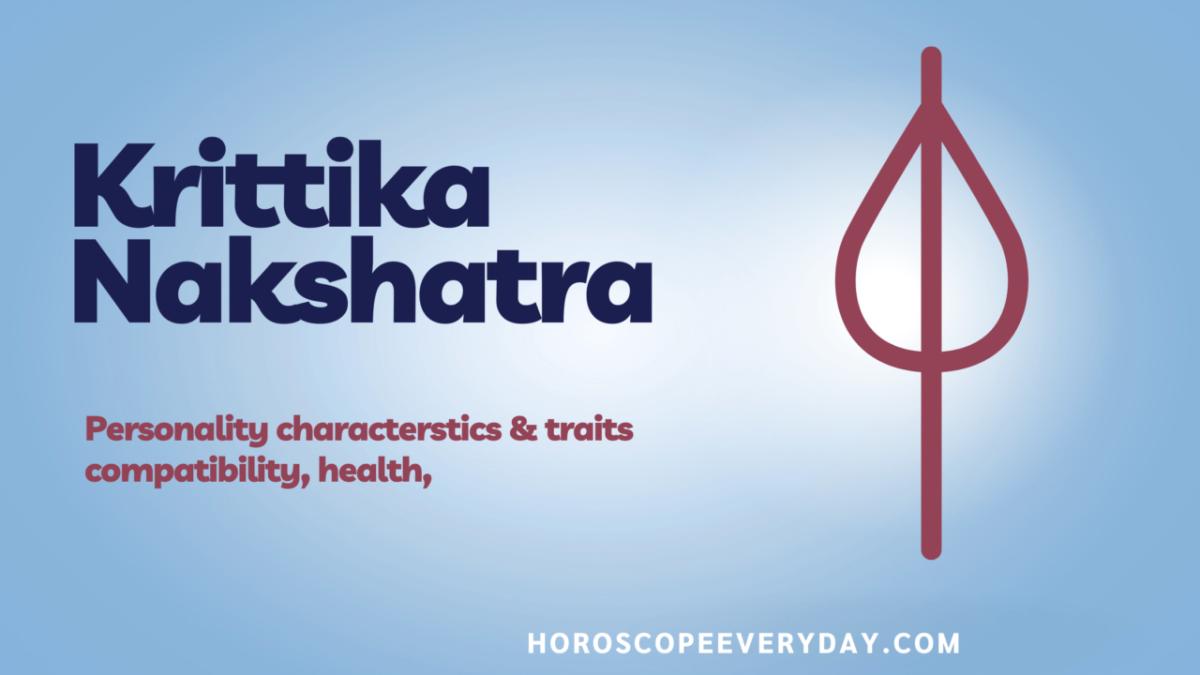
#Krittika #Nakshatra derived from the name #Kartikeya, has its roots in Hindu mythology. Kartikeya was the son of the deities #Shiva and #Parvati. Legend has it that in a contest against his brother #Ganesha, Kartikeya lost and decided to leave his parents’ home to live elsewhere. Krittika Nakshatra is associated with an #axe and is under the influence of the #Sun. People born under this nakshatra tend to inherit some of the characteristics of Lord Kartikeya.
One notable trait of individuals born in Krittika Nakshatra is their tendency to venture far from their place of #birth in pursuit of success and prosperity. Whether it’s education or any endeavor leading to long-term achievements, they often kick-start their journeys away from their hometowns. Interestingly, they have a strong affinity for activities like gardening, agriculture, or anything related to the nurturing and maintenance of trees. The symbol of the axe holds a dual meaning for them, symbolizing both agriculture and the act of cutting down, and it’s up to each Krittika-born individual to determine which aspect resonates more with them.
Despite their reputation for cutting ties, Krittika Nakshatra individuals are paradoxically quite emotional and yearn for strong connections with others.
Translation: The #Cutter
Symbol: #Razor, Axe, or #Flame
Lord: Sun
Controlling Planet: Sun
Ruling Deity of Ketu: Shiva
Deity: #Agni – #Fire
Body – VarahaMihira: Hips, loins, waist
Body – Parashara: Eyebrows
Rashi / Zodiac Sign: Aries & Taurus Sign
Nature: The Sharp and Soft ( #Mixed)
Ganas: #Rakshasa (Demon)
Mode: Active
Constellation: 6
Gender: #Female
Dosha: #Kapha
Element: #Earth
Lucky Color: #White
Letter: Ah, Ee, Oo, Ay
Lucky letters: A, I, U & V
Lucky Stone: #Ruby
Lucky Numbers: 1 & 3
Animal Symbol: #Female #Sheep
Bird Name: #Peacock
Tree: #Fig
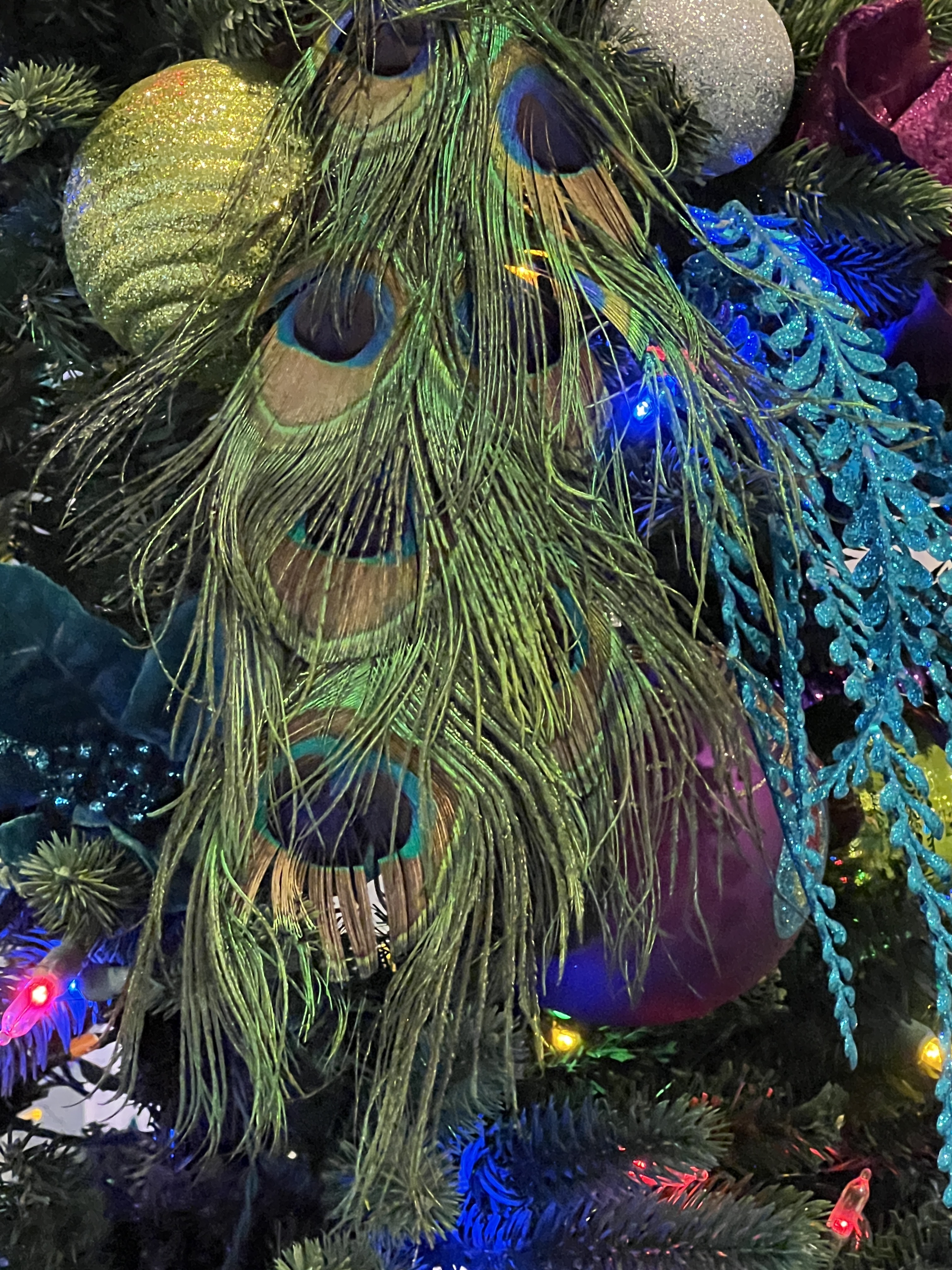
Merry Christmas, be it evergreen, palm, or peacock.
(No peacocks were injured in the making of this tree.)


Goddess #Siddhidatri
Goddess Siddhidhatri

The #Ardhanareshwara form of Lord #Shiva; it is believed that Lord Shiva obtained all siddhis by worshipping Goddess Siddhidhatri.
As the nine nights represent the nine planets, we will be focussing on Navaratri and the nine planets with an account of one or another the planets for nine nights. For the NINth night of Navaratri, we will take the planet Ketu. The colour for the Ninth day of Navaratri (Navami) is #Peacock #Green, so we scribe in Peacock Green for this ninth day observance of #Navaratri. The #Goddess is #Siddhidhatri.
Today is the Ninth day (Namvami) of the Navaratri celebrations which are held for nine nights. All festivals are meant to remind mankind that they should cultivate noble qualities by engaging themselves in activities beneficial to one’s own self and society. Sai Baba made this reference to Navaratri and the Nine Planets:
As part of Navaratri celebrations, people worship different forms of divinity. You should develop sacred feelings and experience divinity. What is the inner meaning of Navaratri celebrations? These nine nights represent nine planets. Each planet has its own significance. However, these planets are not outside, they are within. If your feelings are impure and unsacred, the result also will be the same. You are responsible for the good and bad you think and experience.
#Ketu, the opposite node to #Rahu, came into being during the churning of the Ocean of Milk. The last gift of that churning was the emergence of the God of Healing, Dhanvantari, with the pot of amrit, the #nectar of immortality. Ketu and Rahu were whole at that time, in the form of a demon known as Swarbhanu, who engaged in subterfuge to obtain the nectar whilst it was being served out by Mohini. At that time Mohini was distracting the demons and giving the amrit to the gods. The deception was discovered by the Sun and Moon, who ran tale-telling to Vishnu, who promptly sent his discus and separated the head from the body; that body is today known as Ketu, South Node of the Moon.
In other legends, Ketu is known as the tail of the dragon. Ketu is considered to be signifier of limitlessness; Ketu is thought to be absent, wandering, disinterested, disengaged, disembodied, diffused, apathetic, directionless, destitute, beheaded, surrendering, abandoning, lost. We keep in mind that Ketu is a shadow planet, a karmic repository and an important agent on the journey toward the goal of life. Ketu (which means flag) – due the deep inquiry that this shadow planet is capable of actually flags important staging posts on the human journey of return to the Source.
Devi Siddhidatri is the ninth form of Navdurga and is worshipped on the ninth or final day of Navratri Pooja. In Sanskrit ‘Siddhi’ means perfection and the divine Goddess is revered to seek all types of Siddhi. The grace of Devi Siddhidatri can put an end to greediness and help to control and satisfy the desires of her devotees.
Goddess Siddhidhatri is portrayed wearing a red sari and sitting on a lotus flower. Her vahana (vehicle) is a lion. She is depicted holding a Gada (mace) in her upper right hand, a chakra in her lower right hand, a lotus flower in her lower left hand and a conch-shell in her upper left hand. It is said that one can even see a disc of light around her golden crown. This light is believed to instil devotion in the heart of devotees towards the Supreme Power and liberation from karmic bindings. Goddess Siddhidatri bestows occult powers on her worshippers and is therefore revered by beings from all three realms i.e. heaven, hell and earth.
It is commonly believed that Lord Shiva is half-male and half-female and this form of Shiva is worshipped as Ardhanareshwara. Ardhanareshwara is a combination of three words “Ardha,” “Nari,” and “Ishwara” means “half,” “woman,” and “lord,” respectively. According to Vedic scriptures, Lord Shiva attained all the siddhis by worshipping this Goddess.
Ketu and the Feminine
Ketu has very poor reputation garnered over the ages and in narrative, yet, is disposer of intelligence of a deep order. Ketu is also disposer of spiritual intelligence. We know that Ketu is disconnected from much of the world, very much an entity, and energy devoted to its own private realm, perhaps the cave of the mystic who intuitively comes to know what reality actually is. This is very much activity driven by the feminine within, that which is fecund, life-forming, life-giving and birthing into the new world. It is the feminine that nurtures and sustains us in the night-sea journey of the inner small self. It is the feminine that calls us unto the deep to explore the real, the touchstone of life, the life beyond imagination, feeling, attachment, delusion: the urstoff of what it means to be human. Ketu hears the deep calling unto the deep.
Significance of Navaratri
(On the life of Adi Shankara)
“The great Acharya was barely four years old at the time. His father, a devout scholar, used to offer daily worship to Goddess Raajeshwari every morning. Meditating before the Goddess with closed eyes, he would offer a bowl of cow’s milk to her. When he opened his eyes after meditation, he would find that bowl was only half-full, the other half having been accepted as an offering by the Goddess. One day, he had to go to a neighbouring village for three days. He told his wife to arrange worship of the Goddess in the customary manner with the offering of milk, with the young Shankara deputizing him in the worship. In accordance with his father’s instructions, the young lad sat in front of the Goddess in the sanctum and performed the prescribed ritual. After meditation, when he opened his eyes, he was astonished to see that the bowl of milk offered to the Goddess remained full. He felt sad and cried out: ‘Divine Mother! What wrong have I done? I cannot bear this punishment. Please show your grace on me as you did for my father.’
He prayed intensely for some time with closed eyes. When he opened his eyes he saw that the bowl was now totally empty. All the milk had gone. He was in distress again and cried out: “Devi! You have consumed all the milk. Where is our share of the Prasadam? If we are denied this, what mother will say and what will others think? I will not leave this place till the bowl is refilled.’ In response to fervent prayers, the Goddess spoke: “Dear child! When the river has joined the river, how can it be redirected? Shankara said: “Nobody will believe me when I say that no milk was left in the bowl after my worship. They may think that I drank all of it. I cannot face them. Devi! Without your Prasad, I will not leave this place. I will lay down my life at your Feet.” Swami concluded this moving account of the episode with the following finale: “Devi Raajeshwari’s heart melted on hearing the young boy’s appeal. She took the bowl and poured her Divine breast-milk into it and gave it to the young devotee.’ The compassion of the Divine, Swami said, has no limits.” Sai Baba. SS. 6/97. p. 153
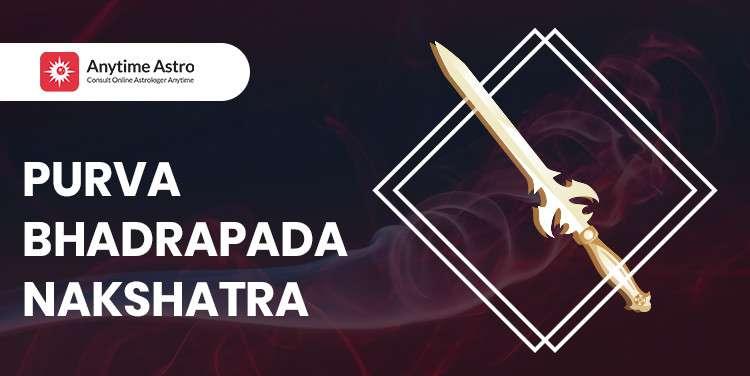
Zodiac Sign or #PurvaBhadrapada #Nakshatra Rashi- Aquarius and Pisces
Purva Bhadrapada Nakshatra Ruling Planet- #Jupiter
Purva Bhadrapada Nakshatra Lord or God- #Ajaikapada
Purva Bhadrapada Nakshatra Symbol- #Front part of a funeral #cot
Purva Bhadrapada Nakshatra Degree Range- 20° Aquarius - 3°20’ Pisces
Purva Bhadrapada Nakshatra Mode of Functioning- Passive
Purva Bhadrapada Nakshatra Quality- #Human
Chara Rashi/ Navamsa- Aries, Taurus, Gemini and Cancer
Purva Bhadrapada Nakshatra Lucky Number- 7
Purva Bhadrapada Nakshatra Yoni- #Simha
Purva Bhadrapada Nakshatra Dosha- #Vata
Type of Nakshatra- Cruel or #Ugra
Purva Bhadrapada Nakshatra Dasha- 16 yrs
Purva Bhadrapada Nakshatra Numerical Potency- 25
Purva Bhadrapada Nakshatra Gender- #Male
Purva Bhadrapada Nakshatra Guna- #Sattvic
Purva Bhadrapada Nakshatra Gana- #Manushya
Purva Bhadrapada Nakshatra Element or #Tattwa- #Ether
Purva Bhadrapada Nakshatra Mobility- #Movable
Purva Bhadrapada Nakshatra Caste- #Brahmin
Purva Bhadrapada Nakshatra Animal- #Lion
Purva Bhadrapada Nakshatra Names Starting Letters- Se, So, Daa, Dee
Purva Bhadrapada Nakshatra #Bird- #Peacock
Purva Bhadrapada Nakshatra Lucky Stone- Yellow Sapphire
Purva Bhadrapada Nakshatra Lucky Color- Golden yellow or Silver Grey
Purva Bhadrapada Nakshatra #Tree- #Neem
Purva Bhadrapada Nakshatra Traits- dutiful, long-lived, adulterous, impetus, opinionated, cynical, passionate, determined, hard working, intelligent, unbiased, peace loving.
About Purva Bhadrapada Nakshatra
Purva Bhadrapada holds the 25th position in the series of 27 #Nakshatras. It is a protective constellation that offers anterior protection and anterior shelter. In the sky, Purva Bhadrapada Nakshatra can be seen as two bright stars in the Pegasus constellation. The two stars form the shape of the front legs of a funeral cot or a sleeping bed. In modern astronomy, these stars are referred to as Alpha-Pegasi #(Markab) and Beta- Pegasi( #Scheat).
Etymologically, the word Purva Bhadrapad means “the former (the one who possesses) lucky feet”. Alternatively, Purva Bhadrapada is also named “Purvaproshthapada'' which means “the former (the one who possesses) the feet of a stool”. Purva Bhadrapada is symbolized by the “front part of a funeral cot” which denotes exit from the world. In #VedicAstrology, Pisces is the sign of exit in the zodiac wheel. It also relates to sleep which signifies a temporary form of death and a sleeping bed. It speaks of the time when you retire to bed in the night after performing all your worldly duties.
Alternatively, the Purvabhadrapada star is symbolized by “a man with two faces”. It speaks of the man in the imagery of the Nakshatra who has a benign look on one face and a mad, violent and destructive look on the other. Some scholars also represent the Purva Bhadrapada Nakshatra with the symbol “ a sword”. It is associated with the process of “cutting off” signifying dissolution and the destructive side of nature. This symbol associates the constellation with all sorts of pain, sorrows, despair, death and endings. “A single ray of Sun” is also a symbol of this asterism. It speaks of the gloomy aspect of Nakshatra where the hope is negligible and inconsequential. In the image of the Nakshatra, the skulls and bones lying around are considered as the secondary symbol of the Nakshatra. It depicts danger that is associated with vicious places and situations.
Purva Bhadrapada constellation is associated with dark deities of ancient cultures. It is the consummation point of Jupiter’s energy that doesn’t allow any intervention of destructive acts of the constellation. The Nakshatra is also associated with the entourage of Lord Shiva. It refers to the dying process that relates it to death and endings. All kinds of sexual perversions and phobias originate in this Nakshatra.
The Purva Bhadrapada Nakshatra Lord, Aja-Ekapada is the one-legged snake (the serpent of Kundalini). It translates into “the one-footed goat” and “the one-footed unborn one”. In Vedic texts, this mysterious creature is referred to as a goat head monster who is one of the 11 Rudras and an epithet of Lord Shiva. He is a dark deity that rules all kinds of black magic. Due to this, the Purvabhadrapada Nakshatra men and women are attracted to occult and black magic.
Apart from Jupiter, the other planets that are associated with Purva Bhadrapada Nakshatra are Saturn, Neptune, Uranus and Ketu. However, except for Jupiter, most of the planets don’t fare well in Purva Bhadrapada Nakshatra. The well-disposed Jupiter in Purva Bhadrapada allows Saturn to offer favorable results. Saturn associates the asterism with grief and disciplined aspects whereas Uranus relates it to the futuristic and technological aspect. Ketu in Purva Bhadrapada offers its natives energy to inflict torture upon themselves and others. Moon in Purva Bhadrapada bestows natives with money, stingy nature and accountability to place the wealth at the disposal of the spouse or partner.
In the Universal scheme of things, Purva Bhadrapada Nakshatra exhibits “Yajamana Udyamana Shakti”. It represents the ability to elevate the evolutionary level. It is symbolized by imagery having humanity above and astral regions below. This imagery represents that the Purva Bhadrapada star is the bridge that connects the consciousness on materialistic and non-materialistic planes. It shows that this Nakshatra has the power to increase one’s evolutionary level through internal purification brought by the raging heavenly fires of penance.
Purva Bhadrapada Nakshatra in English is referred to as Purvabhadrapada/ Purva Bhadrapada. Purva Bhadrapada Nakshatra in Tamil is referred to as Purattathi Natchathiram (பூரட்டாதி நட்சத்திரம்). The name of Purva Bhadrapada Nakshatra in Malayalam is Pooruruttathi Nakshatra (പൂരുരുട്ടാതി നക്ഷത്ര) and the name of the Purva Bhadrapada constellation in Telugu is Purvabhadra (పూర్వాభాద్ర).
Purva Bhadrapada Nakshatra Physical Characteristics
Children born in Purva Bhadrapada Nakshatra are medium-sized. They have broad cheeks, fleshy lips and a simple countenance. They exhibit smiling eyes and have a pleasant, vibrant and powerful personality. However, they do not care for their outer appearance and keep an elegant, serious look.
Purva Bhadrapada Nakshatra Behavioral Characteristics
Purva Bhadrapada Nakshatra men and women are extremely intelligent, unbiased, simple and peace-loving. They are god-fearing people with a great interest in supernatural powers and abilities. These natives are truth seekers and always try to follow the path of Dharma and truth. They do not get into evil ways or use any cheap tricks to manipulate and deceive others. They are optimistic, friendly and generous. They possess a pure heart filled with feelings of love, compassion and kindness. These people are always ready to help others and thus have a good reputation in society, family and friends.
These spiritual individuals are very inclined towards astrology and occult sciences. In terms of finances, they exhibit self-dependency. They prefer to run their own venture rather than serving someone else. They don’t show off and are very simple and down-to-earth. As Purva Bhadrapada Nakshatra males and females are driven by purpose, they show great sincerity, hard work and determination towards their work. They have amazing perseverance and can go the extra mile to accomplish their goals. They make sure that they are careful and attentive towards important matters. However, at times, most of the Purva Bhadrapada star natives take wrong ways to fulfill their objectives.
Due to the power of Purva Bhadrapada Nakshatra's planet, Jupiter, they seek knowledge and wisdom. They expand their knowledge and are more focused to enhance it than acquiring wealth. However, their knowledge helps them to gain access to wealth. People born in Purva Bhadrapada show a well-balanced, rational and abstract approach towards things. They follow noble means generally and are very intuitive when it comes to sensing dangers.
Purva Bhadrapada-born natives are adventurous and brave. They have a wandering nature due to which they move from one place to another and don’t have a permanent abode anywhere. These natives can be spotted easily in the crowd due to their highly strung and nervous demeanor. They carry a happy countenance, though, and act friendly in social gatherings. Their communication skills are good and they use it to evolve on personal and professional fronts.
Purva Bhadrapada people are basically two-faced. They exhibit dual personalities and keep secrets of themselves and others. Being misled, these natives can show dishonest, negative and immoral nature. The positive characteristics of these natives are spirituality, discipline, practicality, idealistic approach, kindness, endurance, helpfulness, protectiveness for family and loved ones.
Since they are ruled by Ekapada (the single footed), these natives are mostly raised by a single parent. They get mature in all aspects at a very small age. As per Vedic texts, people born in this Nakshatra are lucky-footed ones. They bring auspiciousness and fortune at home. These natives are honored due to their fresh and powerful approach towards life.
Career Options for Purva Bhadrapada Nakshatra Natives
The professions that are favorable for Purva Bhadrapada Nakshatra born people are:
All professions that are associated with death such as morticians, coffin makers, cemetery keepers etc.
Medical professions like surgeons, medical practitioners, psychiatrists etc.
Fundamentalists, radicals, and fanatics.
Jobs in the Entertainment Industry.
Jobs as weapon makers and users.
Extreme ascetics, occultists, black magicians, perpetrators of dark technologies
Horror, mystery and sci-fi writers.
Jobs in Police departments and defense.
Jobs in the metal and leather industry.
All the professions involve use of fire and high temperatures.
Jobs associated with toxic substances, high polluting waste products can be good Purva Bhadrapada career options.
Environmental activists.
Pharmaceutical industry jobs
Favorable Activities For Purva Bhadrapada Nakshatra
Purva Bhadrapada Nakshatra is a very auspicious Nakshatra for ending things. You can indulge in mechanical or technological works, agricultural activities, and water-related activities during this Nakshatra period. Any risky and dangerous work can be performed in Purva Bhadrapada Nakshatra. This Nakshatra is very favorable for exploring things related to death and holding any funeral services.
Unfavorable Activities For Purva Bhadrapada Nakshatra
Purva Bhadrapada Nakshatra is not auspicious for beginning any new thing. Marriage is prohibited during this Nakshatra. It is not good to travel, sex and deal with the government or higher authorities in this star. It is believed that activities done during this Nakshatra period result in pain, anxiety, regret, sorrow and extreme difficulties.
Purva Bhadrapada Nakshatra Remedies
People suffering from afflictions of Purva Bhadrapada Nakshatra should worship Lord Shiva. It is believed that seeking Lord Shiva or Lord Hanuman bestows auspiciousness and fortune in the lives of its natives.
The practice of Karma Yoga, which allows a person to seek Dharma and unselfish motives is said to be the best Purva Bhadrapada Nakshatra remedy for neutralizing its bad effects.
Reciting the root Mantra- “Om Vam” and “Om Sham” is also beneficial for Purva Bhadrapada Nakshatra males and females. As per Vedic texts, if one chants this Purva Bhadrapada Nakshatra Mantra 108 times during the lunar transition and in the corresponding month of Purva Bhadrapada Nakshatra, then they get rid of sufferings and gain wisdom and enlightenment.
Purva Bhadrapada star men and women can elevate the positive energy of Purva Bhadrapada Nakshatra by wearing light colors such as light blue. It is advisable for people born in Purva Bhadrapada Nakshatra to undertake all the important actions corresponding to the position of Purva Bhadrapada star for attaining auspicious results.
https://www.anytimeastro.com/blog/nakshatra/purva-bhadrapada-nakshatra/
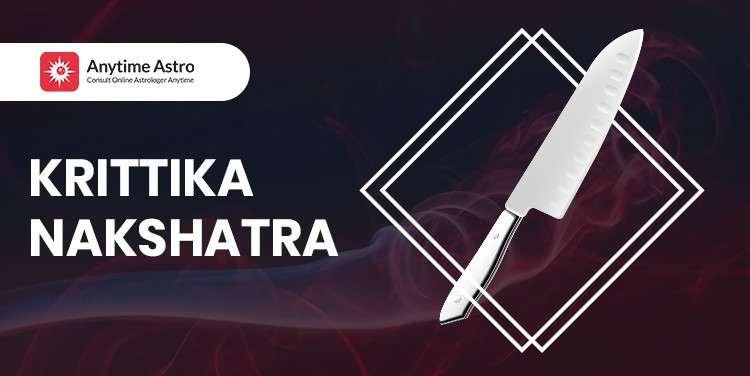
Zodiac Sign or #Krittika #Nakshatra Rashi- Aries and Taurus
Krittika Nakshatra Ruling Planet- The #Sun
Krittika Nakshatra Lord or God- #Agni, the God of Fire or Lord Shiva
Krittika Nakshatra Symbol- #Flame
Krittika Nakshatra Degree Range- 26.40 Aries-10.00 Taurus
Krittika Nakshatra Mode of Functioning- Active
Krittika Nakshatra Quality- Demon or #Rajasic
Chara Rashi/ Navamsa- Sagittarius, Capricorn, Aquarius, Pisces
Krittika Nakshatra Lucky Number- 1
Krittika Nakshatra Yoni- Mesh
Krittika Nakshatra Dosha- Kapha
Type of Nakshatra- Mixed
Krittika Nakshatra Dasha- 6 years
Krittika Nakshatra Numerical Potency- 3
Krittika Nakshatra Gender- Female
Krittika Nakshatra Gana/Nature- Rakshas (demon like)
Krittika Nakshatra Guna- #Sattva
Krittika Nakshatra Lucky Color- Brilliant #White
Krittika Nakshatra Mobility- Dual
Krittika Nakshatra Caste- Brahmana
Krittika Nakshatra Animal- #Ewe (Female #Sheep #goat )
Krittika Nakshatra Names Starting Letter- Aa, Ee, U, A
Krittika Nakshatra Bird- #Sparrow and #Peacock
Krittika Nakshatra Tree- #Audambar ( #Ficus-Racemosa)
Krittika Nakshatra Traits- Power to burn, aggressive nature, stubborn, fickle minded, strong, extremely brilliant, talkative, learned, good in studies, no ability to rectify.
About Krittika Nakshatra
Krittika is the third Nakshatra of twenty seven Nakshatras. It can be seen in the sky as the group of 7 stars. As per Vedic astrologers, this Nakshatra signifies a necklace and thus it exhibits a great cosmic significance. The main symbol of Krittika Nakshatra is an Axe or any sharp edged instrument such as blade, razor or knife. It represents the penetration power of Krittika Nakshatra that creates and destroys any superficial layers of mental and emotional instincts. A flame of any type is also used as an epitome of Krittika Nakshatra. It is associated with Lord Agni, who is the source of power and energy. Alternatively, Peacock is considered as a symbol of the Krittika constellation.
Krittika God, Kartikeya is the commander of celestial Gods. He is the son of Lord Shiva and Goddess Parvathi. As per Hindu scriptures, Krittikas were the seven wives of seven galactic sages who raised Kartikeya. As Krittikas fostered the Krittika Nakshatra Lord or God, the child born in Krittika Nakshatra exhibits the characteristics to care and nurture. Krittika Nakshatra are considered as the five senses while Kartikeya represents infinite perceptivity of the innocent mind.
Krittika Nakshatra in English is referred to as Krittika. Whereas, Krittika Nakshatra in Tamil is referred to as Karthikai Natchathiram (கார்த்திகை நட்சத்திரம்), the name of Krittika Nakshatra in Malayalam is Karthika Nakshatra (കാർത്തികനക്ഷത്ര) and name of Krittika Nakshatra in Telugu is Kritika (కృత్తిక).
Krittika Nakshatra - Physical Characteristics
Due to lunar influence, Children born under Krittika Nakshatra have a bright and pleasant appearance. They have a commanding personality. Their appetite is good. They appear jovial and cheerful and would have a stout body if the Mercury is in the second or third quarter of this constellation.
Also See: Best Vehicle Purchase Muhurat in 2021
Krittika Nakshatra - Behavioral Characteristics
Krittika in Sanskrit means “critical”. It endows the characteristics of finding fault and critically analyzing the cause of all kinds of imperfections between the apparent and the real. People born under Krittika Nakshatra cannot withstand imperfections, They consider any sort of imperfections as obstacles in the way of success.
Krittika natives are innocent, independent, determined and warm. They have a straightforward and direct approach towards everything. They behave bluntly and possess fiery energy. They don’t like to beat around the bush and thus often offends or intimidates people around them. However, children born in Krittika Nakshatra are not sharp-edged all the time. They are diplomatic and graceful in their social circle. They become reliable friends and are very swift and understanding in nature. They exhibit an intelligent mind and have great abilities to perform in any point of situation. Their likes and dislikes are very strong. They possess excellent leadership skills, nurturing abilities, learning traits and fighting spirit.
The main Krittika Nakshatra characteristic is their burning nature. They are very focused on developing their innate abilities and do not hesitate to remove any obstacles from the path of achieving their goals. The Krittika constellation is associated with “Dhana Shakti” which means they have power to sever ties of the body. They are highly sacrificial. If they are spiritually inclined, then they take no time to leave any materialistic pleasure or entanglement or desire.
Krittika natives are spiritually invoked. They undergo extreme purification. Thus, there can be various ups and down in their lives. The negative characteristics of Krittika Nakshatra is their short temper. However, it is short lived and they do not carry enduring vengefulness. The main drawback of Krittika Nakshatra people is their intolerance, impatience and inability to bear.
Career Options for Krittika Nakshatra
Critics, Managers, Technical professions in general, Educators, Teachers, Jewellers and Glassmakers, Fire-fighters, Spiritual teachers, Barbers & hairdressers, Gold diggers & miners, Tailors, Fire dancers, Explosive experts, Fencers, Surgeons, Lawyers, All military professions, Professional dart players or Archers, creative arts done by using Fire, Blacksmiths, Judges, Swordsmen, Works associated with needles such as Embroiderers or Vaccinators, Furnace Makers, Police, Professions related to making of Cooking utensils or Trade tool, Jobs related to rehabilitation of addicts and self improvement activities are the best Krittika Nakshatra Career options.
Also See: Accurate Career Prediction by Date of Birth
Favorable Activities
Fire worship or purification, leadership activities, executives work, cooking, embroidery, sewing, shaving, cutting, drumming, and debates, extracurricular activities, education related works, military activities, starting anything or taking initiative, commencing new ventures and all fire activities are considered auspicious in Krittika Nakshatra.
Unfavorable Activities
Socializing, leisure, water related activities. Diplomatic works are considered inauspicious in the Krittika constellation.
Krittika Nakshatra Remedies
Krittika born natives should indulge in the worship of Kartikeya and the Sun. They should recite Gayatri mantra and show respect towards the seven wives at the moment they observe Pleiades constellation. In order to neutralize the negative effects of the Krittika constellation, these natives should worship fire. They should perform a fire ritual using incense and Sandalwood sticks, Cow Ghee, sesame seeds. When the Moon positions in Krittika, its natives should observe fasting.
Krittika star natives can also recite the Krittika Nakshatra mantra (root mantra)- “Om Im”, “Om Oo” and “”Om U” 108 times during the Moon’s transition in Krittika Nakshatra and in its corresponding lunar month. As per Vedic astrology, reciting this Krittika Nakshatra Mantra is beneficial in brightening up the native’s life and removing all the sufferings.
Wearing bright colors like gold, orange, red, yellow and colors seen in Peacock feathers are also recommended. Krittika Nakshatra natives should perform important actions corresponding to the lunar course of the Krittika constellation for the positive results.
https://www.anytimeastro.com/blog/nakshatra/krittika-nakshatra/
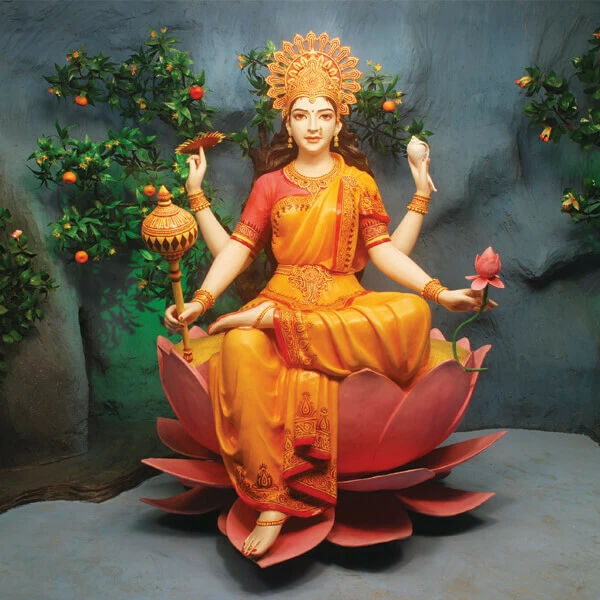
#Happy #Navratri Day 9
Navami

#Maa #Siddhidatri Puja
Ram Navami
30th
March 2023
(Thursday)
Navratri 9: #Peacock #green
Day 9 is the last day of the Navratri festival. The day is called Navami. #Goddess Siddhidatri is worshipped on this day. Peacock green is the colour of this day. It is believed that one side of Lord Shiva's body is that of Goddess Siddhidatri. Therefore, he is known by the name of #Ardhanarishwar. As per the scriptures, Lord #Shiva attained all the siddhis by worshipping this Goddess.
Siddhidatri Mata is worshipped on the ninth day of Navratri. Her names means: Siddhi - spiritual power & ‘Datri’ - the giver. The goddess is known for removing ignorance and giving knowledge to realize the eternal power, which is running the entire cosmos.
About Siddhidatri
Maa Siddhidatri is seated on the lotus and rides a lion. She has four arms, where one right arm holds the Gada (mace), other one holds the Chakra (discus weapon), one left arm holds lotus, and the other one holds Shankh (conch). She is the Goddess who holds all the Siddhis.
Legend
Lord Shiva worshipped Goddess Siddhidatri to attain all the Siddhis. She made him perfect by giving all what she had and became one with him. Lord Shiva’s half body turned into Goddess Siddhidatri. Since then, he got the name Ardhnarishwara.
Astrological Aspect
Planet Ketu is ruled by the Siddhidatri Maa. Hence, all the ill effects of Ketu can be pacified by worshipping her.
Mantras
ॐ देवी सिद्धिदात्र्यै नमः॥
Prarthana Mantra:
सिद्ध गन्धर्व यक्षाद्यैरसुरैरमरैरपि।
सेव्यमाना सदा भूयात् सिद्धिदा सिद्धिदायिनी॥
Stuti:
या देवी सर्वभूतेषु माँ सिद्धिदात्री रूपेण संस्थिता।
नमस्तस्यै नमस्तस्यै नमस्तस्यै नमो नमः॥
Dhyana Mantra:
वन्दे वाञ्छित मनोरथार्थ चन्द्रार्धकृतशेखराम्।
कमलस्थिताम् चतुर्भुजा सिद्धीदात्री यशस्विनीम्॥
स्वर्णवर्णा निर्वाणचक्र स्थिताम् नवम् दुर्गा त्रिनेत्राम्।
शङ्ख, चक्र, गदा, पद्मधरां सिद्धीदात्री भजेम्॥
पटाम्बर परिधानां मृदुहास्या नानालङ्कार भूषिताम्।
मञ्जीर, हार, केयूर, किङ्किणि रत्नकुण्डल मण्डिताम्॥
प्रफुल्ल वन्दना पल्लवाधरां कान्त कपोला पीन पयोधराम्।
कमनीयां लावण्यां श्रीणकटिं निम्ननाभि नितम्बनीम्॥
Stotra:
कञ्चनाभा शङ्खचक्रगदापद्मधरा मुकुटोज्वलो।
स्मेरमुखी शिवपत्नी सिद्धिदात्री नमोऽस्तुते॥
पटाम्बर परिधानां नानालङ्कार भूषिताम्।
नलिस्थिताम् नलनार्क्षी सिद्धीदात्री नमोऽस्तुते॥
परमानन्दमयी देवी परब्रह्म परमात्मा।
परमशक्ति, परमभक्ति, सिद्धिदात्री नमोऽस्तुते॥
विश्वकर्ती, विश्वभर्ती, विश्वहर्ती, विश्वप्रीता।
विश्व वार्चिता, विश्वातीता सिद्धिदात्री नमोऽस्तुते॥
भुक्तिमुक्तिकारिणी भक्तकष्टनिवारिणी।
भवसागर तारिणी सिद्धिदात्री नमोऽस्तुते॥
धर्मार्थकाम प्रदायिनी महामोह विनाशिनीं।
मोक्षदायिनी सिद्धीदायिनी सिद्धिदात्री नमोऽस्तुते॥
Kavacha Mantra:
ॐकारः पातु शीर्षो माँ, ऐं बीजम् माँ हृदयो।
हीं बीजम् सदापातु नभो गृहो च पादयो॥
ललाट कर्णो श्रीं बीजम् पातु क्लीं बीजम् माँ नेत्रम् घ्राणो।
कपोल चिबुको हसौ पातु जगत्प्रसूत्यै माँ सर्ववदनो॥
Make the best of Navratri’s ninth day and get blessed by Siddhidatri Durga.
Happy Navratri!
dedicated to Ma as SiddhiDhatri – often rendered in translation as the ‘Bestower of Boons’, or words to that effect. And yet, while this is indeed a reasonable direct translation of SiddhiDhatri (‘Siddhi’ having amongst its meanings a ‘Boon’, often in the sense of a Gods-bestowed supernatural power; while “Dhatri” shares a root with English terms like “Dative” and “Donation” – the ambit of which should be immediately apparent), it loses so much as to be arguably significantly distortionary to the actual role, portfolio and characterization of the Goddess in this Aspect as to make leaving the theonym untranslated almost more preferable.
But where would be the ‘challenge’ in that.
Confused? Allow me to explain. There is a prevailing theme in really bad mythtaken theological wishful thinking of construing the Gods (or, indeed, the singular God of the Abrahamic approach) as, to quote a certain tv show, something akin to a fast-food drive-thru menu: that is to say, you place your order, and the asked-for bounty is thus presented to you. This, as many a pious-in-the-face-of-adversity-or-ineffability Devotee will tell you, is not how religion actually works.
Indeed, while there is a justifiable strand of something which might vaguely look like such a thing to be found in both the ancient Vedas, and other comparable Indo-European traditions – in the form of Bhaga, or the ‘Treasure-Friend’ (again, to use a figurative translation rendering, in this case from Germanic languages), or I suppose the concept of ‘patronage’ more generally (which in its older sense where political corruption or whatnot is not implied, requires a Patron, dispensing influence and material support to his people, as part of a reciprocal arrangement of loyalty on upwards and heading back ‘down’ again) … these are not to be compared to some kind of materialistic (even as it functions on a metaphysical nominal basis) “exchange” of putting in the coinage of declared acts of notional piety and expecting the Vending Machine of the Gods to ‘pony up’ with the return ‘favour’.
That is, at its worst, a cynical and manipulative attempt at a consumerist – worse, a capitalist – “interaction”. Value (in the true sense) and passion-free.
Whereas these other examples I have enumerated, are contingent upon something else. An actual bond, a tie of loyalty, of faithfulness, of piety, and often – not at all insignificantly – of parentage. The comparison of these latter forms to the abhorrent one earlier enumerated, as if to make out that they are the same thing, can only be made by those who have not managed to appreciate the fundamental differences of kind rather than mere degree which exist between them. But, then, in an age wherein one’s nine-to-five-in-the-morning middle-management ’employer’ presumably likes to conduct themselves in what they think is a manner befitting a feudal lord (but in actuality is much more closely aligned to the concept of an ancient slave-driver sans the mandatory breaks) … it should be entirely unsurprising then, that we so frequently confuse this with the actual conduct of a liege – a chieftain, a warrior-king, a Lord, with all the noblesse oblige … and/or (depending upon particular cultural inflexion and one’s role in the resultant society) the more equitable distribution of the proceeds of a raid and the mutual sharing of the shouldering of responsibility and active contribution that goes with.
So why am I mentioning all of this in the context of an article on Ma as SiddhiDhatri, and more especially having just connoted the difficulties in translation conveying the meaning of Her theonym when it is far too simplistically rendered ‘Bestower of Boons’?
Probably only partially for the reason you are no doubt thinking.
For yes, it is true that the role and presentation of Ma as SiddhiDhatri is very much more closely aligned with this far more archaic approach to the concept of both a Boon and its Bestowment. And I am obliquely concerned that the simple ‘direct’ approach of translation utterly loses this sense of nuance – these shades of meaning – for the fact that it is being presented to a fundamentally ‘Modern’ audience … with all the unique cadaverization of context and consciousness still less conscience which that entails.
But we’ve got to go DEEPER!
Deepa, too, but that is something we’ll no doubt get to on Diwali 😀
As we shall soon see, it is not at all coincidental that Ma as SiddhiDhatri stands at the end of the NavaDurga processional throughout the course of the Nine Nights. Indeed, stands as one of the array of NavaDurgas Whom we might feasibly say is emblematic of Adi Shakti Herself. But before we get to that … let us indulge in a little definitional presentation!
As remarked capaciously upon above, both Siddhi and Dhatri have a quite a number of meanings – especially once the shifting shades of intonation inherent in Sanskrit ‘puns’ and intentionally connoted double-meanings are taken into account!
Siddhi can indeed very much mean a ‘supernatural power’, but that is not all. It can also mean a completed work of art or artifice (intriguingly – including ‘cooking’, which rather aptly gets across the idea in the sense that ‘a work of art’ (not so much Aarti) perhaps does not with such immediacy), a quality of excellence or efficiency/efficacy, the ‘resolution to a quandary, that emphasis upon ‘completion’, and ‘perfection’ or ‘perfectability’, as well as the idea of ‘liberation’ – especially in its final sense, so to speak. An ‘undertaking’, a ‘fulfilment’, an ‘enlightenment’ – and yes, also, a ‘payment’, a ‘bestowal’, a “boon”. Getting the ‘picture’ yet?
Dhatri, meanwhile, has three (or, three and a half, depending upon how one chooses to count them) stems of meaning. The first and most direct,दातृ , is the one we have already encountered – that of a giver, a gifter, a bestower, a donor (this is a cognate term), and interestingly, in particular, one who ‘gives away’ a female relative for marriage.
The second,धातृ , which is technically speaking something of a homophone due to a slight change of pronunciation on the first syllable, stands for a ‘creator’ – and as one might presume, acquires some relevancy especially with regard to the ‘cosmokrator’ position within the Pantheon. While some might seek to therefore affix it to Brahma, I would once again reiterate what was said about the mid-point in the NavaRatri cycle pertaining to MA as the Hiranyagarbha. How this, too, fits into both the “SiddhiDhatri” rubric I am sketching out, as well as the overarching NavaDurga Mythic Cycle, we shall return to in a moment.
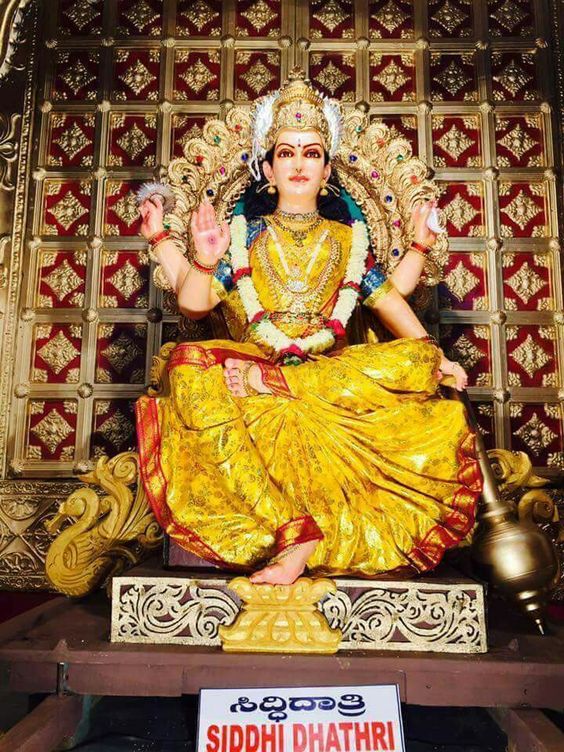
The third, meanwhile, is धात्री, which is once again a slightly differently pronounced homophone – and which has, most interestingly, a meaning-field which includes the notion of both a Mother and the Earth (most appropriate, given Ma as ‘Earth Mother’ in a number of guises – including, as our previous works have discussed, Parvati most directly, and obviously also Prithvi Ma, and a number of others besides!) ; however, the term also encompasses in its ambit of meaning, somewhat ‘surrogate’ Mother figures – ‘Foster-‘ or ‘Adoptive-‘ Mothers, wet-nurses, and even midwives fall under this ambit. Although that last one (indeed, the last two) in particular is of a subtly different shade of meaning which shall be discussed additionally.
Now, those among ye with a certain ‘appreciation’ for the ability to think ‘sideways’ – in the ‘adjacent’, so to speak, when it comes to language and theological conceptry, will already have grasped the general implication of what I am getting at here. Yet we must make it explicit! Somewhat, at least, insofar as such a thing is possible.
ALL of the above and aforementioned meanings for these two particles – both the direct ones which are to be found without further seeking within the terms themselves, as well as the different-yet-clearly-and-evidently-related meanings of the subtly different pronunciations of Dhatri, etc. – all of these are very much deliberately meant within the name SiddhiDhatri.
SIMULTANEOUSLY!
And you thought that the rather ‘broad’ seeming meaning-field of “Kali” was potentially ‘complex’ 😛
The reader can, of course, amuse and/or enlighten themselves by putting back together various English translations from the elements contained within the above paragraph. I shall not enlengthen this piece tooooooooo much by doing so in any great detail myself.
But it is very important to consider a few of the basic ‘mythemes’ going on here, nevertheless.
For “SiddhiDhatri” is clearly not ‘just’ the Bestower of Boons. But also the bestower of Perfection – the bequeather of Liberation, in the sense that such is available to the ‘perfected soul’ … and if you cast your mind back to that analogy of cooking I proffered earlier … it may seem a strange thing to constitute the process of Sanskara, of reincarnation and progressive building upon previous lives lead, as something perhaps akin to “cooking the soul”; and yet, “stick him back in – he ain’t done yet!” does have a certain ‘flavour’ that is rather useful in getting across the idea here.
The Soul as (potentially speaking, at least – and guess what the fulfillment of that potential would be rendered as in Sanskrit 😛 ) a Work of Art … “Self-Cultivation” as the Divinely Supported – indeed: mandated, ordinated, ordained – Project for the Ages, is quite something to think about!
Not least because, when you look back over the course of the NavRatri Processional of the NavaDurgas in Their Mythic Cycle, we see that this is exactly what has been taking place over the span of same. From Ma as Shailaputri (or even preceding this as Sati, come to think of it) – through to Ma as SiddhiDhatri [that is to say, the nascent and neophyte, somewhat, Daughter of the Mountain, through to the Mother of the Earth – a ‘beginning’ to a ‘fulfilment’, a ‘seeker’, to the ‘Truth’, and a ‘rebirthed ember-emanation’ [in multiple senses of the evocative nature of this term – consider just what it was that lead to Lady Sati dying-then-reincarnating … as Princess Parvati as Lady ShailaPutri] right back through Transcending Inferno (recall my commentaries on .. a number of Devi Forms in the course of these Nine Nights, come to think of it) eventually ultimately up to Adi ParaShakti Indeed!
Gaining powers, experience, enlightenment, and the ‘pressurization’ which forms those self-same (so to speak) ‘ashes’ , the ‘carbon’ from which all life [and much in the way of ‘structures’ and ‘civilization’ – and, for that matter, many wildernesses and forest terrain in particular!] we ken is ultimately made , as well as the impressions of so much art and illustration and literature upon the ‘page’ or the ‘cave wall’ or the ‘forehead [in the case of Vibhuti markings] … via which this ‘carbon’ bourne of ashes … is ultimately rendered – ‘transfigured’ [and here I am perhaps emulating a Christian theological term] – indeed into the Diamond .. the ‘perfect form’, the ultimate hardness, the ultimate cutting, the ultimate self-refracting and self-reflecting lattice-work that is therefore ‘complete in and of itself’ … and, not at all coincidentally, one of the mighty translations of “Vajra” – hence and whence the “Vajra” of “Vajrayana” and such in Buddhist post-Vedic developments upon the Term; and why it is an ultimate weapon, and invincibile, indestructible armour [c.f one of the meanings behind the Theonym of Bajrang Bali – Lord Hanuman .. not simply ‘wielder of the Thunder Club’, but The Invincible!] – the ‘flawless soul’, the ‘flawless being’, against whom None in existence can ultimately stand!
All of this is – ultimately, in both senses – the Perfection of the Being, the Essence, the Elements & Energies (indeed, the Universe), the Soul.
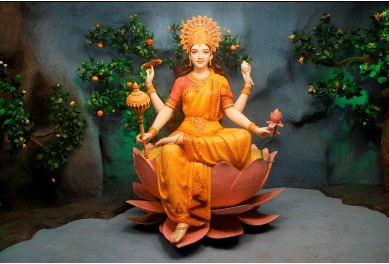
Whether you choose to take the ‘growing bonsai mountains’ (a Terry Pratchett reference there, to the rather excellent ‘Thief of Time’) view, of the soul, and one’s life (lived throughout, perhaps paradoxically, many lifetimes), as being ‘self-cultivation’ in the manner that one might attempt to grow and shape a garden (or that aforementioned bonsai mountain) over the span of many years into the shape one finds most pleasing …. or whether you take a rather more ‘removed’ view, which instead chooses to see the ‘self-cultivation’ being an exercise carried out not so much (or at least, not only) by the “self” in question – and instead, an act of Divine Artifice [I recall both something said of/to me by somebody presenting themselves as an oracle, a seer, in that Shaivite instance – that I was ‘carved’ by Mahadev ; or the related maxim “I am a living weapon – crafted by the Hands of a God” ; and, for that matter, the Nordic perception upon some of the various Actions of Lord Odin in a bid to craft better and better warriors for the War At The End Of The World].
Or, perhaps, as a ‘both’ position, something akin to the way in which a child’s growing up entails the active agency of both Mother and Child in the course of guiding and shaping that individual into the person they shall later become. This last, probably, is something closest to the ‘truth’ of it – after all, it’s ultimately ‘our choice’ whether we listen to our parents .. just it is (within the bounds of ..er .. ‘material constraints’, ironically in this case) their choice to a reasonable extent as to what they teach us, what schools or other contexts they place us in … at least in the early (and often most crucial) years.
Yet I have perhaps digressed.
My point is that Ma as SiddhiDhatri can bestow Enlightenment and the guidance that will eventually lead us, too, to Perfection. Liberation, or Moksha (and the two do not always mean the same thing – but that is a metaphysical/theological discursion for another Night!). But also, ‘Empowerment’.
For you see, in the Hindu understanding of such things, that is what many of these ‘Siddhis’ actually are. Outer [or, rather, inner-to-outer] manifestations of a more potent inner radiance. In just the same manner that a furnace, when stoked, shall produce ever more heat, light, smoke, steam, and motion if it happens to be affixed to a turbine.
The soul, the being, the person, the purpose, is the furnace [I may be implicitly referencing the Upanishadic ‘Five Fires’ doctrine here, also]; the ‘Bestowment’ is the process of increasing its inherent ‘energy’ and the self-mastery to safely project these out, through the tools, the outlets which She can give us (like that aforementioned turbine, perhaps – at the dangers of slipping into a sort of teleological “techno-theology”); the “Siddhis” are the actual manifestation and enactment of this increase, this growth and somewhat change in inner ‘essence’.
Taking what was there beforehand [and, to be sure, in a not dissimilar manner to how Ma as Kushmanda provides the Spark to the Sun – so, too, does She provide the initial fire, the initial radiance, to the Purusha .. whether God or Mortal or indeed Material Universe alike], and causing it to grow into what it can, it should, it must be.
And, in the process, unlocking the “ecstasy” – in the Greek-Heideggerian sense, of “ex-stasis” [‘outside of time’ – permanency, but also the complete absorption in Doing What One Was Created To Do … the pleasure of ‘self-realization’ where we seem outside the flow of ordinary events precisely because these are, to us, no longer “ordinary events” in which we are engaged in – they are our Destiny, our Fate, our Calling .. we are Being All That We Can Be – quite literally, at the upper end of the path of which I am speaking]; which surely must correlate with SiddhiDhatri’s ‘Bestower of Bliss’ [Ananda in various, indeed, all senses and levels; for such it is to approach the World-Axis … although this can also entail hanging in torment, perhaps for another period of Nine Nights, in pursuit of such a Siddhi as the Power of a Language-form – Vak, or Runes …. ]
Siddhis – that is to say, the supernatural powers which She is regarded as possessing absolute mastery over – are not only something developed within and bequeathed to humans, however.
They frequently turn up in scriptural and other sources as potencies which other Deities are capable of both developing and manifesting in the course of Their mythic arcs, often in direct proportion to Their Own Pathways ‘back’ upwards toward Their full and fully self-understood (that is to say, enlightened) Divine Natures.
The best example of which, perhaps, is Lord Hanuman – Who is rendered amnesiac about His True Divine nature, and along with it loses His knowledge of the Siddhis which are otherwise intrinsic to His Divinity and ‘Personhood’ – fated only to start ‘remembering’ them, these powers, as He learns to engage in the selfless/serious-minded service of others, and more properly carry out His appointed role within the Cosmos. [Bajrang Bali as mentioned above; also illustrates the core element of Hindu approaches to this phenomenon – the Diamond, as ‘perfected’ and shining forth in radiant splendour, with the potency of the Divine Thunderbolt and similar indestructibility as a result of its correctly arranged internal structure; but also, as applies that Being especially, something my Didi once said about being a divine spark having a human experience – encountering Piety, at least in part, as the effort to remember , be reminded who and what you are]
Curiously enough, another shining illustration for the concept – which also focuses more upon devotional energy, striving and effort [‘Tapas’ – linguistically connected to words for ‘Heat’, ‘Light’, and ‘Flame’, and coming to mean “penance”, “austerity”] in order to attain the Siddhi, the Boon in question, from the Beyond – comes to us from Hanuman’s Father: Shiva-Who-Is-Odin.
This has been spoken about in a little more depth in my previous “To Speak Is To Uphold The Weight Of The Universe” article comparing several Indo-European perspectives upon language; but suffice to say, it is my belief that the attainment by Odin of the Runes – also the culmination of Nine Nights of Tapas-ic conduct, carried out in particular connexion to the Axis Mundi, the World Tree [which, as considered in quite an array of my previous work, is strongly correlated with Devi – theologically, linguistically, and in other manners besides] – represents just such an Attainment of a Siddhi, as we would expect to observe elsewhere in Hindu myth.
I shall quote myself from the relevant previous article –
“Now, before going further with this explanation, it is necessary to but briefly parse the concepts of ‘Purusha’ and ‘Prakriti’ as they occur particularly in a specific Shaivite-Shakta context. A more indepth and, er, ‘accurate’ accounting for these words would take up an article many times the size of this one; for our purposes, we’ll simply run them as ‘Body’ and ‘Spirit’ respectively. [I stress that they can also mean .. other things, especially in relation to each other, including, somewhat peculiarly, almost the other way around] (Male) ‘Purusha’ in a cosmological context referring to the ‘universe’, the ‘world’ itself [and, indeed, there have been some academic comparisons made between the course of the Purusha Sukta and the Slaying of Ymir, in each case for a sort of cosmogonical effect], and Prakriti, here conceived of as the feminine particle, being an investiture of something supernal, a thought-form, an ‘essence’, from beyond/outside it.
So how does this relate to the Runes? Well, we’ll sketch out our thinking in more depth in a later article, but suffice to say that as the Runes are fundamental to reality, indeed precede it in an external sense, as part of Orlog [‘Orlog’ – Over-Law, Supernal, Outside/Above/Beyond-Universe Law – i.e. Rta], Their projection into our reality, to the Male in question [when He had briefly gone beyond, above, via self-sacrifice, tied about the Female World-Tree Axis Mundi] seems very like the above-aforementioned concept of Vak as Prakriti investing into the Universe, Purusha. And would also, as it happens, in a certain sense perhaps typologically mirror the way in which Freyja/Frigg teaches Odin magical secrets; or the famed Devi Sukta of the 10th Mandala of the RigVeda talks about the Divine Queen empowering the Man That SHE Loves & Chooses.”
As you can see, when we consider this in our #NAS framework of belief, the unifying thread of the two Nordic elements drawn from here – the Attainment of the Runes By Odin, and the Teaching of magical potency to Him – is that both are instances of Devi bestowing, donating empowerments to Her Husband.
That particular form of relationship also coming to the fore in another of my favourite Hymns of the 10th Mandala of the RigVeda – the ‘Jnanam’/’Vak’ sukta, detailing the development of language and the granting of its intricate understandings and competencies to the Seers (Rsis): “But to another hath she shown her beauty as a fond well-dressed woman to her husband” [RV. X. 71.4].
This, as I have noted above, goes with an array of the core theme-expressions of the DeviSuktam [RV. X. 125] – which, in amidst an array of other statements about how it is that Devi [as Vak, in some accountings, but I would more properly suggest as (Adi)(Para)Shakti, and thence through Vak, amidst further Devi engagement(s)] supports and empowers the various Gods, those undertaking proper and appropriate pious action, indeed the Universe and the Heavens and the lines of heredity and descent themselves … is this line: “I make the man I love exceeding mighty, make him a sage, a Ṛṣi, and a Brahman.” (variant translation: “whomsoever I choose, I render him an exalted one, make him a ṛṣi, make him Brahman or make him highly intelligent.”) [RV. X. 125.5].
So right there, we have exactly the role and some of the saliency of Devi as SiddhiDhatri – supporting Gods and certain mighty mortals, to carry out their proper and apportioned roles, through the bestowing of their (and Their) relevant Powers [Siddhis]; also encouraging, facilitating, educating even, beings to become more enlightened, more powerful (Power-ful, indeed – in touch with Shakti and thusly imbued … as is the Universe Itself at Its Highest Arc, and thence back all the way down); and rewarding the pious and devoted conduct of those who are making their own eventual journey up the Mountain of existence, of life, the universe, and everything.
Glorious!
But to return to one of the metaphors deployed in the course of them hymnals, and our own #NAS theological explication, we see something that is once again core and immanent to prominent Hindu perspectives around the mightiest of the Gods – the Trimurti – and Their Wives; Who, per this interpretation, are granted to Them by Shakti, as … I hesitate to state “augments”, or “completers of Them”, because that reduces the female ‘component’ to just that – a “component” added to something which already exists, rather than the “other part” which makes something into what it truly is. And if there is anything we should not be doing in a Shakta theological commentary, it is implicitly ‘diminishing’ Woman to a mere adjunct.
The better perspective perhaps, is that elucidated via the quotation around Purusha & Prakriti from my article, as reproduced above. Wherein the ‘encounter’ between Goddess and God is an investiture of essence which makes somethings [plural] that have a prior and somewhat independent existence, into something greater than either is on their own.
In the case of Shiva and Parvati, this is #Ardhanarishvara.
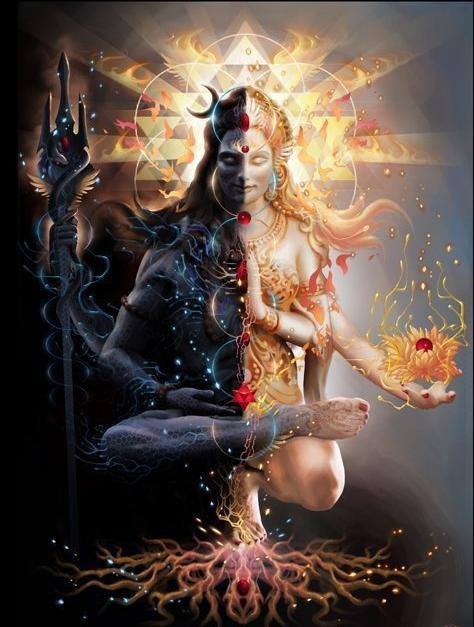
Ardhanarishvara as Ishvara – The Over-God Who Is Both Parts As Over-God, to translate a little figuratively.
Or, phrased another way, and as detailed in some of the earlier articles of this series, the reunification of Parvati with Shiva is the ‘reconstruction’, the ‘reintegration’ via which They resume Their position at the apex of the world. Two halves which make the Axis Mundi whole and turn again. This is also what is entailed in the discussion between Brahmacharini [Who, it should be remembered, is undergoing Tapas – as, after a manner, Shiva has been via His austere forms of living; although He perhaps did not know that He was also, through such, working His way back towards the Goddess … Who was also winding Her way back towards Him] and Lord Shiva wherein Shiva finally realizes/remembers/is convinced that the young aspirant standing before him is infact His Devi, His Wife, His Other Half – for it is a theological debate upon the notions and natures of Prakriti & Purusha … which, in a certain way, helps Shiva to ‘understand Himself’ [‘recollect Himself’] once more [c.f also RigVeda X. 125.6 , coming directly after the line around making the man She loves “mighty”, “a Sage”, “a Rsi”, “a Brahman” – “I bend the bow for Rudra that His arrow may strike and slay the hater of devotion.” Part of what makes Rudra … well … Rudra, is that He is an Archer; a Destroyer – hence, here, the Archery, the Destruction can only really take place via Devi’s investiture and active engagement with and through Him! The Trishula, too, as correlate in symbolism to the Bow, is closely and directly relevant here – as noted in previous commentaries, as the Mountains, the Mountain-Spear, the Axis Mundi within His Mighty Hands, HERSELF!]
The famed sage Adi Shankara phrased it thus in the opening couplets of his Saundarya Lahari [‘The Waves of Beauty’] –
“sivah saktya yukto yadi bhavati saktah prabhavitum
na cedevam devo na khalu kusalah spanditumapi —
“Only if conjunct with ‘Sakti’would ‘Siva’earn the privilege to
become overlord; otherwise the God is not able even to stir.”
[variant translation:
“Lord Shiva, only becomes able.
To do creation in this world along with Shakthi
Without her, Even an inch he cannot move,
And so how can, one who does not do good deeds,”]
The next lines are also highly relevant to consider – as they state that only one who performs noble, meritorious, good deeds, who is pious, is able to engage with Devi.
Which, if you should recall from some paragraphs prior in this piece, is precisely what is entailed via the ongoing life path of Hanuman, as an example; and the general principle which it enjoins of positive deeds and pious expression – the cultivation of both inner light and outer radiancy of its expression, as “Krinvanto Vishvam Aryam” and Sanskara of the Soul to correspond therewith. “Inner Development” and “Self-Cultivation”, therefore, even leaving aside the ‘making whole and illumination of the world around and outside us’ aspect – is a (re-)connection with the Divine inside us, the lighting of something akin to a Diya lamp [the Agni within – the Conduit to the Upplands and Beyond], that almost bypasses the world between us and the Highest (Uber/Over) Heaven. Except, of course, insofar as it radiates back out again; and the ‘golden threads’ between us and It, forming chords [in multiple senses of the term – sonic theology is also veer-y much in affect!] through and to the supernal realm.
So therefore, we have two somewhat related approaches under discussion here. The establishment of a relationship with Devi by … marrying a Goddess; and/or via proper and meritorious, pious conduct, ultimately directed thereup and thereto.
One of these is, for obvious reasons, rather more easily attained than the other. For even the man who otherwise has nothing, can still have Faith. Indeed, it has often been observed that some who are amidst the most brimful in abundance in that regard, are so precisely because or otherwise alongside the fact they have so little else (by accident or by design). This does not mean that poverty and sitting naked on a mountain-top is the only, or perhaps even necessarily the*best* way towards such a state – indeed, I would contend that [and oddly enough, this is somewhat borne out in my reading of the Reunification Myth of Shiva & Parvati], doing so as a “renunciation” of the world is actually almost the wrong way to go, for many – as it abdicates much of the possibility of actually doing the “good deeds” side of things, in favour of a more exclusive focus upon, if not “the self”, then at least, an individual. [In terms of my aforementioned reading of the relevant Shaivite-Shakta myth – Shiva’s retreat to the Mountains in solitude, while necessary for Him in that circumstance, is nevertheless something that has to come to an end, for the good of the universe itself overall]
But in either case, and most especially in the convection-zone that is both [a convection zone, after all, entailing a rise and a cycle of such same, as a direct result of heat, Tep-, Tapas, remember?], one should strive to be worthy; and whether this entails that one actually somehow winds up attracting the attention of a Goddess for a direct interaction or prolongued engagement, perhaps being Chosen by Lady Vak as aforementioned – or whether this simply results in the indirect strengthening of soul to the point that this or that Siddhi, or other manifestation of the superior soul is manifested … well, it shall surely be the result of making one’s self worthy of Divine notice. She, after all, is “the gatherer-up of treasures”; Who also “load[s] with wealth [‘donations’] the zealous sacrificer” [RV. X. 125. 2 and 3, respectively].
And, indeed, one does not necessarily have to be ‘perfect’ to be ‘moving in the right [rite] direction’. A woman will often see the potential and the promise in a man, even if it is not directly realized at that particular point in time – will therefore act, as we have said, to make him better over the course of their engagement. This, too, we can see in those relevant RigVedic hymnals – with especial reference to the notion that it is Devi, in whichever Form, making the male in question mighty and knowledgeable and wise and powerful. Of course, this should not necessarily be taken as a radical statement of egalitarianism – in these cases, it is nevertheless a small and select few who are Chosen in any such manner; building upon pre-existing elemental, essence-ial competencies and characteristics, and fundamental foundations of being in the first place, we can likely surmise. For it is not to be held to be the case that Devi makes an ordinary man Rudra – even though, in an important and significant sense, it is Devi Who makes Rudra Rudra. Rather, it is Rudra Who is made the greater, Shiva Who is made ArdhanarIshvara.
And it is the great man, greater still, who recognizes that his role in life is to live in the best possible imitation of these mythic over-truths – picking up and resounding out their resonances … without seeking to confuse, to delude himself that he is their ultimate source.
The Lesson of SiddhiDhatri for the Devotee, then, is quite simple.
Find Devi.
And go both within and beyond your self, to do so. For there may be a ‘universe’ within you – but more aptly, there is a universe around you, and you are connected within it to the universe above you and even further (t)hence beyond.
Allow Her to help, become Guided; and note that the marble .. chisel .. can hurt a bit in its striking, its sanskara – sculpting.
Become Worthy of Her interest, Her assistance, Her beneficence, Her Support. Her Empowerment [and it is not at all coincidental how we would often translate Shakti into English – nor how the path of Shakti up the spine to the Crown is customarily en-traced out, leading ultimately to the Radiance of the Sahasrara Chakra, the Resoundingness of the MahaNada Sound pealing out across the Cosmos from the First through to the Fabric through to the Last – just as ChandraGhanta represents a crown of both holy light and the pious emanation of the striking of a Temple Bell … so, too, does this concept speak to becoming in-touch with, and a radiator out of what is drawn down from this connexion, this conduit, with the Supreme].
So therefore, who is Devi as Siddhidhatri, and Where can we find Her? Well, some obvious answers have already presented themselves:
In addition to the both obvious and subtle instances of the direct appearance of the Goddess [whether er .. directly, or through what is meant by Vak – ‘divinely resonant’ vocal/linguistic expression; or for that matter, that Mata, through other forms of Darshana] – wives, mothers, Mandirs & Goddess(es), other teachers, refiners of our beings and imparters of wisdom, devotional practices, meritorious deeds, pious action, spontaneous flashes of Divinely Revelated insight [provided that that is actually what it is, in any given case … delusion, too, can look like radiancy to those who dearly, desperately, are Trying To Believe [as, perhaps, contrasted with Fox Mulder’s “Want To Believe” – which implies an active openness, if not necessarily a yearning credulency that would be entailed in “Trying”]].
In all of these, are to be found various and varying directnesses of pathways [back] to Devi.
And this should not at all surprise us. For what is the Role of Devi as SiddhiDhatri?
It is to ‘inspire’ us, to ‘guide’ us, to ‘nurture’ us – particularly if we’re up to listening and taking direction, acknowledging our Ma is, in fact, right … and Has the Right.
But also, to “bring out in us” [hence ,धात्री as ‘midwife’] and ‘put into us’ [hence, धात्री as ‘wet-nurse’, hence दातृ as in ‘donor’] That Which Needs Be There! The INSPIRER OF GREATNESS; the Foundation [दातृ – ‘founder’; धात्री – ‘earth’] and Inceptor of the inexorable rise of the Chosen to the status and faculty of a Great Man, a Sant, a Jivanmukta [which, per this enhanced perspective, is not truly one who is “self-liberated”, any more than there can ever be such a thing as a truly ‘self-made man’. But rather, one who has been blessed and empowered from Above and Beyond by HER to reach his otherwise unparalleled and often semi-near inexplicable state and status of development. It does, of course, retain the other sense of “self-liberated” – as such we should expect entailed in the axiomatic moving “beyond” of the limited nature of an earlier human self].
SiddhiDhatri, is therefore the Perfect Mother .. both insofar as She is the Mother (of All) Who Is Perfection, and also as She is the Mother (Foster Mother, somewhat, also, to the Devotee -for We also have our birth-mothers to acknowledge and regard! As the greatest act of piety, indeed!) Who Is Perfect For and To Us, Her Devotes, Her दत्रिम सुत, Adopted Children. SHE is HiranyaGarbha – the Perfect (Golden) Creator. And even afore SHE as (Maha)Kali brings about the end of it all, SHE also oversees and guides our pathway (our PathiWays) upwards towards, as does any nurturing mother, ‘maturity’ – the superior state, the more full ‘realization’ which is who and how we are supposed to be.
In terms of the Siddhis Themselves, it is as the continuance of what was said in last night’s Ma as MahaGauri piece – that just as ‘white light’ contains within it all other colours, and just as MahaGauri shows that She has the self-knowledge and self-mastery to ‘bring out’ the relevant ‘facing’ as and where and when necessary with reference to HerSelf … so therefore is Ma as SiddhiDhatri the ‘furtherance’ of this. The ‘perfection’ of it, you might even say.
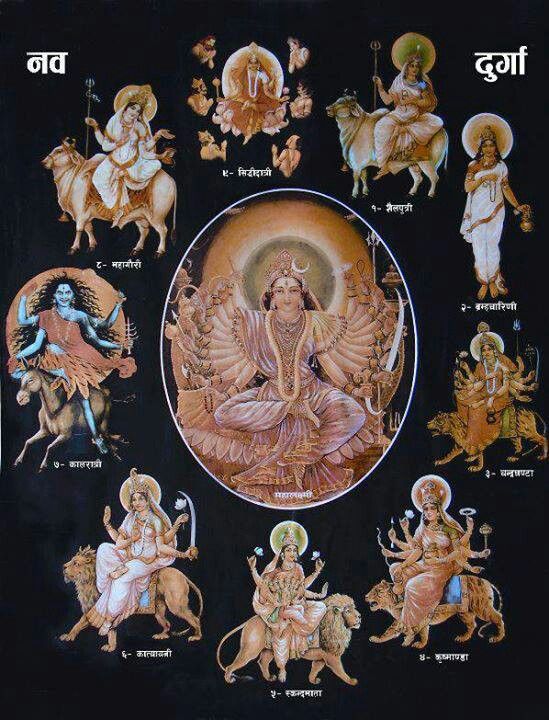
For here, not only are all the Siddhis to be found, but They are so completely mastered (including also as embodiments/qualities/emanations/projections/investments of HER), as to be impartable out to others, at will. Indeed, as Will [this, too, is a somewhat figurative rendering for Prakriti].
SHE Has Power over the Siddhis of Understanding, Piety, Enlightenment, and Knowledge – for She IS Understanding, Enlightenment, Piety, and Knowledge [Especially ‘Self-Knowledge’, ‘Self-Realization’ – for She is your Master and ultimate architect, author, artist, of our being and becoming]. Indeed, building from both of the RigVedic hymnals cited above, She is both the means of communication and examination/realization, and the means via which the results of all of the above are actually incorporated into our selves, our being(s), our perception(s) of the world – and therefore, our worlds, which are thusly also reshaped via what we put back out into them again, in turn. The “convection zone”, as previously noted, is also a “cycle”.
SHE Has Power over the Siddhis of the Material, those of growing, changing, shrinking, shrouding [‘seeing’ in addition to ‘perceiving’], increasing or eschewing entirely the density of, altering the position within space or even time of, one’s being … for SHE IS the Tapestry and Fabric of the Universe [and so much more, beyond, all-permeating, as well], Maha-Maya, and therefore in ultimate command and control of All That Might Transpire Within Her Domain.
Indeed, SHE Has Power over the Siddhis of Command, Control, and Conquest – for SHE IS Command, Control, and Conquest, Itself [c.f RigVeda X. 125.6 , amidst many many other sources].
It is often said, for some reason, that “those who can, do – those who can’t, teach”. This is a ridiculous axiom, as while it does encode the possibility for one who is no longer in a position to “do”, to nevertheless still be in a position to guide, to pass on, to impart important wisdom and learned experience as to how to “do” to those who are about to (i.e. to “teach”) … it completely discounts, especially as it is often or ordinarily employed, the rather high likelihood that those who are teaching, either have been capable of “doing”, and have “done” in the past – or, for that matter, are very much still doing, even now, whether inside or outside of the classroom [and, for a certain sort of teacher, the whole world is a class. Both in the sense of constantly, continually teaching .. and also in the sense of learning, themselves, from all over the place, almost assuredly at the same time].
The Myths of Devi more than demonstrate exactly this principle in action. For while She is unquestionably the greatest possible Teacher – She is also, and not coincidentally, the greatest possible Doer. Both through setting All in motion, and through direct interventions within the Universe thus ‘in motion’.
And woe betide the unutterably unctuous specimine who would forget that.
For they are liable to find themselves … not through a process of self-realization … but rather, on the wrong end of the Trishula.
For such it is, both symbolically as well as literally, to seek to oppose the veer-y Force of Creation, the Universe, Destruction, Herself.
Iconographically, Ma as Siddhidhatri is relatively simply depicted; tending towards having four arms, wielding a Gada [mace – lordship, martial power, justice], Conch-shell [a war-horn, and also a ritual implement utilized to call people for the actions of piety; in either case, a resounding and rallying sound], Lotus [symbolizing purity, endurance, immortality, and rejuvenation], and Sudarshana Chakra [representing Vision, the Wheel of Time, the Circle/Cycle of the Universe, and the Rolling Wheel of Dharma – also therefore Supreme Lordship, Chakravartin]. She is seated upon a Lotus, or more rarely, Dawon, Crowned, Radiant, and often being worshipped directly by various mighty Gods arrayed about Her.
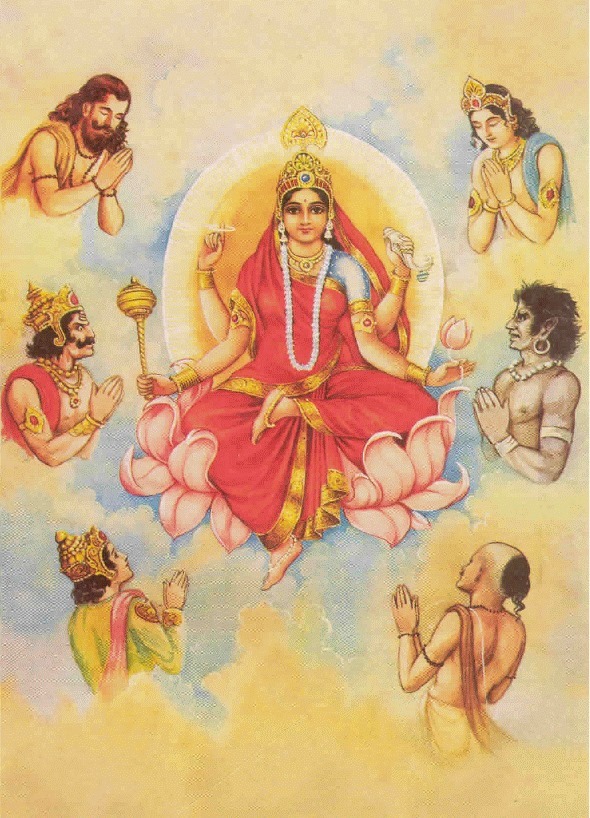
The meanings of the above, ought be abundantly clear, based upon the preceding nearly seven thousand words worth of commentary. They denote the Supernal, the Supremacy, the Eternity, the Powerful, the Pious; the Immanence, the Transcendence, the Active-Exercise of all of the above; Her most august position at the heart of it All.
There are far more complex and ornate depictions of this or that particular form of Devi out there, so it may be asked why – as She is Queen of All – She is not more usually represented in much more ‘expansive’ fashion; say, the eighteen plus arms of some Murtis, bedecked with every implement found in the Armoury of Durga of legendary scripture, and then some.
And the simple answer to this is – how do you really represent She Who Is Everything?
Again, quite simply – She is everything. And so, this symbol is but a smaller placeholder. Beautiful to look at, elegant in its succinctness, but ultimately, with all – and well beyond all behind this iconographic depiction for us to also gaze out at, and up at, in ever-expanding Wonder.
Jai Mata Di ❤
Hail to All And Everything
Jai Jagadamba
Who Is The Mother Of All
Jai AdiParaShakti
Who Is.
जय माता दी ॥
THE RHYTHM OF WEALTH & FORTUNE
IN THE STARS
#Shiva is the one who lives
in the #heart of all beings.
On the night of Shivaratri he unifies with Shakti.
Tantric practitioner gives honour
to the the innermost Yogin
of enlivened Kundalini
upon this night of great union.
– Boonath
The annual night of Shiva presents the soul upon earth with a vortex of energies that open the Chakras to the #magical and #healing force of Kundalini Shakti. The Nakshatra (lunar constellation) upon the night of Shivaratri is Dhanishta. Dhan means ‘wealth, abundance’, Nishta implies rhythmic and constant flow.
This is the star of continuous, musical flow of wealth. It is indeed a star of music and has as its symbols, musical instruments. Dhanishta Nakshatra is a Mangala (Mars) ruled Nakshatra and potently brings us the lessons of wealth and fortune through the secret of rhythmic flow.
It is ruled by the #Vasus, the 8 elemental deities who manifest material abundance and the ability in the arts involving tangible earthly rhythm – such as #music or #dance. It is a #royal Nakshatra that brings abundance and fortune from the inner levels of being into manifestation.
The animals of this Nakshatra are the #lion and the #peacock, the lion is famously called the Jungle ruler. The peacock is a bird that is wealthy in its feathers of beauty, it can’t be denied.
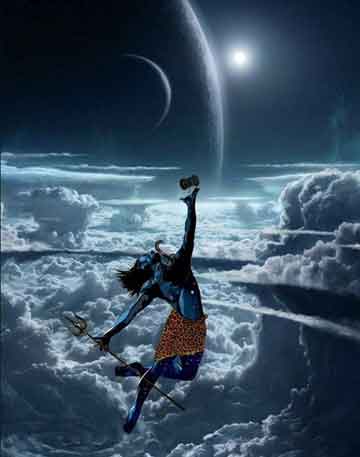
The symbol of Dhanishta Nakshatra is the #drum of Shiva and the #flute. This is a Nakshatra that is heavily concerned with musicality and rhythm. The #Dhumaru is the drum of Shiva and is the ever changing rhythmical heartbeat of creation.
The secret of wealth
on all levels of being
is rhythm.
To know one’s own particular rhythm is to know how to apply ones life forces to the best function. When we don’t acknowledge our own particular rhythm then we deplete ourselves, and so, the secret of Dhanishta is to learn to honour one’s own rhythm. When we honour our own rhythm then we are able to observe the rhythms around us and learn about the keys to wealth and musical living.
Dhanishta brings divine music to us, but obviously we have to set up a receptive rhythm to catch it. Where Shravan Nakshatra gives us listening and hearing, the following Nakshatra – Dhanishta… gives us something grand to listen to.
If we are out of tune with our own rhythm then our view of all rhythms is warped – and so the lesson that Dhanishta brings to us is to learn to pay attention to our own rhythm – so that it may become a receptive instrument to the sounds of infinity.
This is challenging because our personal rhythm is not a fixed thing and is subject to fluctuations and change, so we may not even be able to rely on our ‘own rhythm’ as a thing that is constant. This ever changing nature of rhythm relates to Shiva profoundly.
#NATARAJ
Dancer of Celestial Rhythm
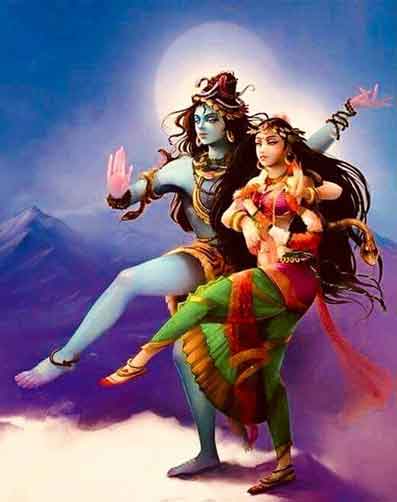
The odyssey of our eternal dance of being is told through the stars in the story of Shiva and his union with Shakti. The dance of Shiva is the dance of destruction that is the secret dance of rhythm. Shiva destroys all past instances and this gives the power to face the ever changing rhythms of the drumbeat of life.
Nataraj is the name of Shiva as the celestial dancer. His dance is a dance that is so fluid and unfixed that it is ever ready and able to dance with the infinity of celestial tides in the infinite cosmology of being. Nataraj the celestial dancer is the grand overseer of this constellation. He is the lord of rhythm and dance, and is famously known for his dance of destruction.
Shiva has the ability to match each and every move of #Shakti like no other can. Shakti has an endless infinity of expressions and the power of Shiva can follow them all. The Stars of Dhanishta are clustered in the #constellation #Delphinus, this is the #Dolphin constellation.
Dhanishta Nakshatra is a star of music and rhythm it is to be remembered. We can see that the dolphin is a creature of profound musicality. It is well known that the Dolphin communicates through incredibly subtle sound frequencies and rhythms.
Dhanishta has another name which is Shravishtha – that which is devoted to Shravan. Shravan is the previous Nakshatra that rules subtle listening and hearing. This following Nakshatra of Dhanishta implies that one learns the art of being devoted to listening – devoted to Shravan
May we gain the ear to dance with the rhythm of nature, and learn to move with the subtlest frequencies of life.
https://www.ancient-tantra.com/dhanishta-nakshatra/

A #peacock leaps into the air as it battles a rival over territory on a foggy morning. The brightly coloured bird jumped almost six feet into the air before crashing down on its opponent. The fight was captured by amateur photographer Nilesh Patel, in Dudhwa National Park, #India.
Photograph: Nilesh Patel/Solent News & Photo Agency/Solent News
#PurvaBhadrapada #Nakshatra

“The Scorching or Burning Pair”
Symbol: Swords, Two Front Legs of Funeral Cot, Man with Two Faces, also a Single Ray of the Sun, Skull and Bones
Deity: Aja Ekapada (An Ancient Fire Serpent or Dragon, or also the Unborn One Footed Goat/ Unicorn, one Who goes Wherever he Likes To, Aja Ekapada is also the Mount of the Rudra a Fierce Form of Shiva, this One Legged Dark Deity Rules over Secret Societies and Clans and hence Associated with all Types of Black Magic, as per Vedas he is Associated with Floods, Storms, and Lighting) Body Part The Sides of the Body, including the Ribs, Abdomen, the Sides of the Legs, the Left Thigh, and the Soles of the Feet
Favourable: Dangerous Activities, Uncertainty, Risk, Mechanisms, Technology, Funerals, Conclusions, Death, Agriculture, and Water
Unfavourable: Beginnings, Initiations, Marriage, Sexual Activity, Dealing with Higher Authorities
Key Points
CONCERN
STRENGTHS
WEAKNESSES
Video Player
Elements connected to Purva Bhadrapada Nakshatra
Deity #AjaEkapada
Symbol Swords / Man with Two Faces
Planet #Jupiter
Purushartha Artha
Gana Manushya
Varna Brahmin (Priest)
Element Aakash (Ether)
TriMurthi Brahma (Create)
Animal Male Lion
Bird Avocet)
Tree Pichamanda, Mango
Sound Say, So, Daa, Dee
Bit lines about Purva Bhadrapada Nakshatra
Mythology
Key Themes
Black Magic and Left Handed Tantra
Hot, Intense, Critical and Passionate
Disturbed Souls, Extreme and Volatile Forces
Alienation, Desperation, Violence, or Betrayal
Rebellious, Eccentric and Sexual Pervert
Star Purva Bhadrapada
Rasi (Zodiac) Aquarius/ Pisces
Range 20o 00’ Aquarius > 03o 20’ Pisces
Padas Aries, Taurus, Gemini, Cancer
Ruling Planet Jupiter
Meaning The “First of the Blessed Feet” or the “Former Lucky Feet”, also referred as a “Feet of a Stool/
Bench”, “The Former Beautiful Left Foot”, or “Ray of Light”, “Beautiful West”
Indication “The Scorching or Burning Pair”
Guna (Quality) Sattwa
Gana (Race) Manushya (Human)
Purushartha (Goal) Artha (Wealth or Material Pursuits)
Tridosha Vata (Wind or Air + Space)
Nature/ Category of Star Ugra (Fierce/ Severe)
Varna (Caste) Brahmin (Priest)
Gotra (Clan) Pulastya (name translates as “One having Smooth Hair”)
Direction West
Pancha Mahabhuta
(Element)
Aakash (Ether)
#Shakti (Power) Yajamana&Udyamana&Shakti (The Power to “Raise the Evolutionary Level, or Power of Spiritual
Fire” to awaken the Spirituality in a Person”)
Basis Above That which is Good for People
Basis Below That which is Good for the Gods
Desire To gain Radiance and the Splendour of Spiritual Knowledge
Result of Shakti, Basis, &
Desire
Support the entire World
Activity Passive
TriMurthi (Process) Brahma (Create)
Direction of Mouth / Motion Adho Mukha (Looking Down/ Facing Downwards)
Yoni (Gender) Male
Animal Symbol Lion
Bird Avocet, #Peacock (Mayura), #Pigeon
Sounds Say, So, Daa, Dee
Tree/ Plant Pichamanda, #Mango (Latin Name: Mangifera&Indica)
Colour Silver Grey
Elements connected to #Shravana #Nakshatra
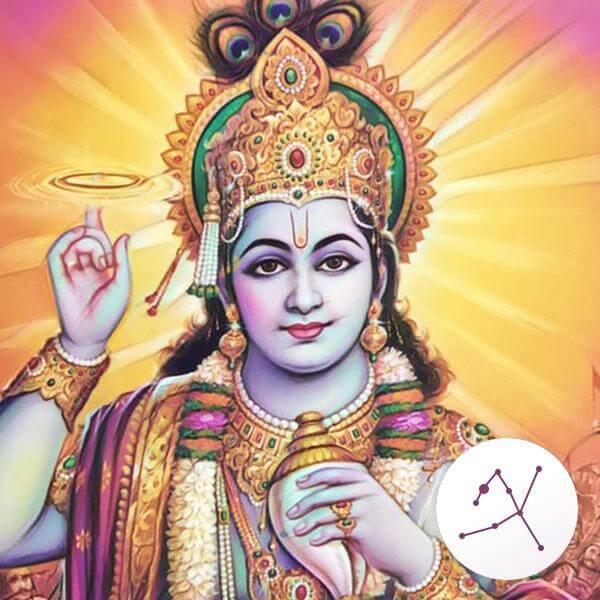
Deity #Vishnu
Symbol Three Footprints
Planet #Moon
Purushartha Artha
Gana Deva (Divine)
Varna Mcleccha (Outcaste)
Element Vayu (Air)
TriMurthi Brahma (Create)
Animal Female #Monkey
Bird SarusCrane)
Tree Swallow WortMilkweed
Sound Ju, Jay, Jo, Gha
Bit lines about Shravana Nakshatra
Shravana
“The Star of Learning Ear”
Symbol: “The #Ear” or “Three Footprints /Footsteps” or “The Arrow”
Deity: Vishnu (Preserver of Universe or the Pervader), Vamana Avatara of Vishnu also called Trivikrama (3 footsteps), Saraswathi (Goddess of Learning) is also associated with Shravana as Subordinate Deity
Favourable: Beginning New Ventures, Counselling, Listening, Travel, Buying Property, Medical Treatment, Socializing, Learning, Study Languages, Reading and Writing, Music, Philosophy, Meditation, Religious Activities, Politics, Humanitarian Activities
Unfavourable: Activities requiring Aggression, Lawsuits, Battles or Wars, taking Risks, Making Promises, taking Oaths, Completion of Activity, Lending Money, Marriage, Adoption
Key Themes
Veda Vachaspati or ‘Vac’ Siddhi (Special Faculty of Speech)
Proficiency in Mantra, Japa and Ancient Dialects
Learning and Knowing Many Languages
Power to Connect to Higher Levels of Consciousness
Star
Shravana
Rasi (Zodiac)
Capricorn
Range
10o 00’ – 23o 20’ Capricorn
Padas
Aries, Taurus, Gemini, Cancer
Ruling Planet
Moon
Meaning
“To Hear and Listen” or “Lame / One Who Limps” or “Listening Equipment”
Indication
“The Star of Learning Ear”
Body Part
The Ear, the Sex Organs
Guna (Quality)
Rajas
Gana (Race)
Deva (Divine, God-Like Dispositions)
Purushartha (Goal)
Artha (Wealth or Material Pursuits)
Tridosha
Kapha (Phlegm or Water + Earth)
Nature/ Category of Star
Chara (Movable, Changeable)
Varna (Caste)
Mleccha (Outcaste)
Gotra (Clan)
Vashistha (name translates as the “Possessor of Wealth”)
Direction
North
Pancha Mahabhuta (Element)
Air (Vayu)
Shakti (Power)
Samhanana #Shakti (The Power to “Connect with Others”)
Basis Above
Seeking
Basis Below
Paths
Desire
To Hear People say Good things about Me
Result of Shakti, Basis, & Desire
Connection of all Things
Activity
Passive
TriMurthi (Process)
Brahma (Create)
Direction of Mouth / Motion
Urdhwa Mukha (Looking Up/ Facing Upwards)
Yoni (Gender)
Female
Animal Symbol
Monkey
Bird
Francolin, Cock (Kukkuta), Sarus Crane (Saarasa), #Peacock
Sounds
Ju, Jay, Jo, Gha
Tree/ Plant
Arka, Rui, Milk Weed, Swallow Wort, Crown Flower (Latin Name: Calotropis Gigantea)
Colour
Light Blue

Utrecht 2021
#bird #birds #foto #fotografie #netherlands #pauw #peacock #photo #photography #vogel #vogels
Originally posted at: https://blog.ernste.net/2022/10/20/herten-duif-pauw/
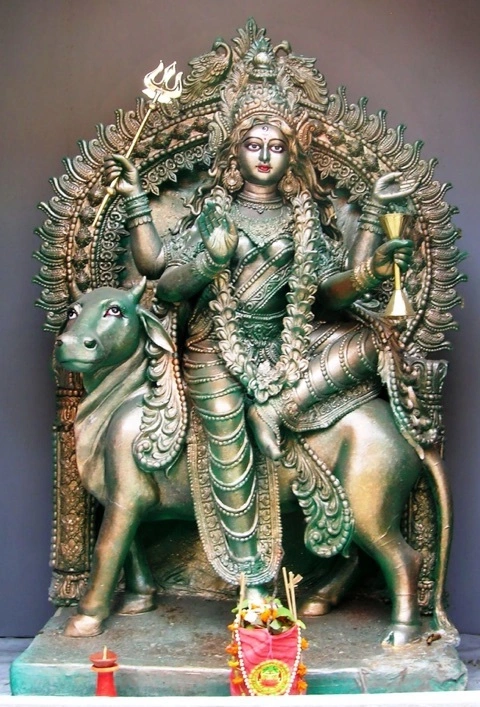
#Navratri Day 8
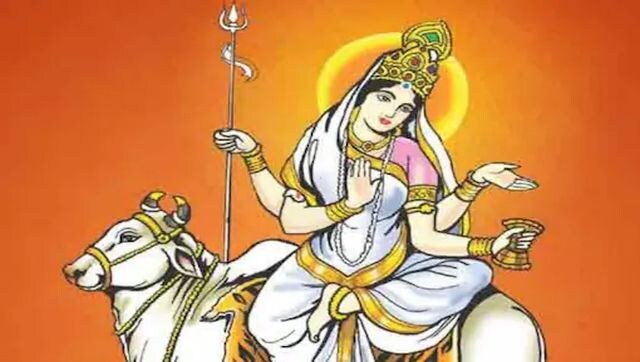
October 3, 2022, Monday
Navratri color of the day - #Peacock #Green
Peacock Green implies uniqueness and individuality. Stand out in the crowd wearing this exquisite shade of Blue and Green on this day of Navratri. This color exudes the qualities associated with both of these colors such as compassion and freshness.
The festival of Navratri is celebrated with full enthusiasm all over India. Navratri day 8 begins with the worshipping of #Maa #Mahagauri. On this day, devotees perform puja in order to win the divine blessings of Maa Mahagauri. Worshipping Maa Mahagauri is believed to bring peace, prosperity, and goodness in one’s life. It is said that performing the puja helps to remove the ill effects of Rahu and other obstacles like sorrows, fear and mental health-related problems. The one who worships Maa Mahagauri with a pure soul attains peace in life.
About Maa Mahagauri
As per the Hindu mythology, the #Goddess Shailputri, the first form of Maa Durga – at the age of 16 – was extremely beautiful. She is referred to as Goddess Mahagauri due to her extremely light complexion in this form. The mount of Goddess Mahagauri as well as Goddess Shailputri is bull which is why she is also known as Vrisharudha. Goddess Mahagauri has four hands. She carries #Trishul in her one right hand and her second right hand is in Abhaya Mudra. She holds a #Damaru in the one left hand and keeps the second left hand in Varada Mudra.
Due to her light skin tone, Goddess Mahagauri is compared with the moon, the conch, and the white flower of Kunda. She adorns white clothes and because of that, she is also known as Shwetambardhara.
Navratri Day 8: Date and Shubh Muhurat
The 8th day of Navratri falls on 3 October. The auspicious Brahma Muhurt will begin from 4:38 AM to 5:26 AM whereas the Amrit Kalam will appear between 7:54 PM to 9:25 PM. Vijaya Muhurat, on the other hand, is between 2:08 PM to 2:56 PM
Navratri Day 8: Puja Vidhi
Place an idol of Maa Mahagauri outside your temple at home. Light diyas and incense sticks. Then offer fresh flowers to the idol and meditate before the Goddess Mahagauri. Chant Maa Mahagauri mantras. End your puja by doing aarti. Distribute prasad among the devotees. Durga Ashtami also falls on this day, people worship young girls who are called kanjaks. They invite nine Kanjaks to their home and offer them prasad. These nine girls are symbolised as the Navdurga. Along with the girls, a boy is also invited and is fed during the kanjak puja ritual, who is a representation of Batuk Bhairav.
Navratri Day 8: Mantra
Om Devi Mahagauryai Namah॥
Navratri Day 8: Stuti
Ya Devi Sarvabhuteshu Maa Mahagauri Rupena Samsthita।
Namastasyai Namastasyai Namastasyai Namo Namah॥
Navratri Day 8: Bhog
Goddess Mahagauri, is offered coconut in the bhog on the eighth day of Navratri. It is widely believed that donating coconuts to Brahmins on Ashtami brings prosperity and happiness to the devotees.



